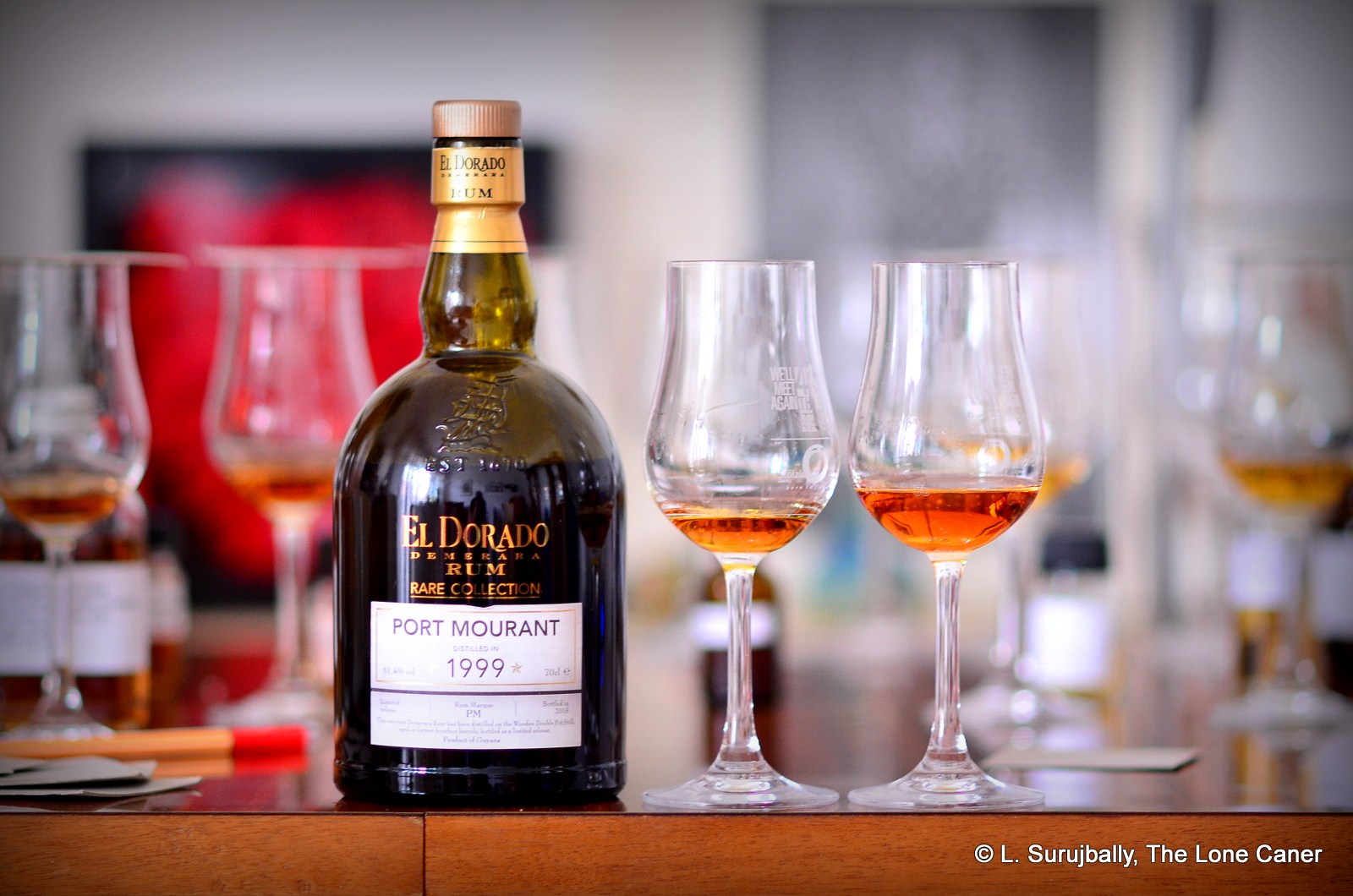There are three of these cask strength single-still editions from El Dorado, one from each of the famed “heritage” wooden stills: Versailles, Port Mourant and Enmore. All are full proof, all are very exacting, and all point to the evolution of El Dorado into the premium rum space previously seen to be inhabited mostly by independent bottlers (occasionally issued halo rums by producers don’t count).
Although there had been movements to issuing still-specific rums before (most notably the Rares in 2015-2018) one never got the impression DDL’s heart was in it: the outturns were too small, people were not initially receptive, and because the bottles were different they were not always known to be from DDL, so sales were lacklustre and they fell by the wayside. The aha! moment (my opinion) came just after COVID, when we began to see the stubby brown bottles and similar labels as the Standard Line, start to come to market.
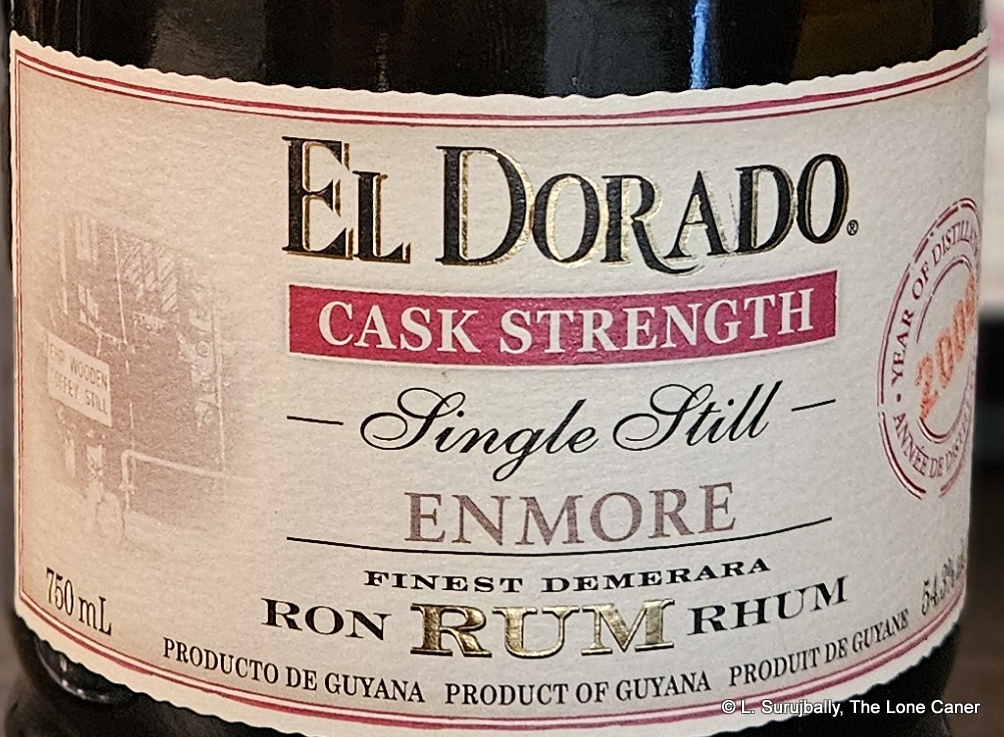 There are two versions of these three rums: one set is at 40%, which I mostly ignore, though I’ve tried them. And the others are at cask strength, that are much more expressive and to me, give a truer insight into the stills’ output. We’ve looked at the 2009 PM edition before, so now let’s turn our attention to the Enmore from the same year, also a 12 YO, and at 54.3% ABV
There are two versions of these three rums: one set is at 40%, which I mostly ignore, though I’ve tried them. And the others are at cask strength, that are much more expressive and to me, give a truer insight into the stills’ output. We’ve looked at the 2009 PM edition before, so now let’s turn our attention to the Enmore from the same year, also a 12 YO, and at 54.3% ABV
Tasting notes: well, it starts off nosing quite nicely: sweet, warm aromatic wood, earth, caramel, honey, yoghurt, vanilla, cinnamon, nutmeg, sort of like an old confectionary shop in winter. It smells of some light sawdust and wood chips, but also (get this) gummi bears, crushed walnuts. peanut brittle (!!), and also some bitterness of tannins and unsweetened dark chocolate and coffee grounds. And lurking behind it like a Beagle Boy with a cosh in his hand is a faint whiff of meatiness, which is odd, I grant you, but far from unpleasant – in fact, the only thing missing here is the slight tart and acidic bite of citrus.
The palate is dry and slightly sweet (I like that). The same bitterness of wood chips, wet sawdust and a used coffee filter, but also bags of really dark fruits: prunes, raisins, plums for the most part, with maybe some overripe dark cherries, and even and olive or two. The woodiness seems a bit more prevalent here in spite of the balancing earthy and spice tones, and once again there is an absence of countervailing bite which certainly will take some getting used to, especially for those who like agricoles or blended Latin style rons. The finish is pretty good, lasting a decent long time, warm and earthy and spicy, with more chocolate and coffee, raisins and some honey to back it up. This is a rum of the country that really does a spiffing job, honestly – I liked it a lot.
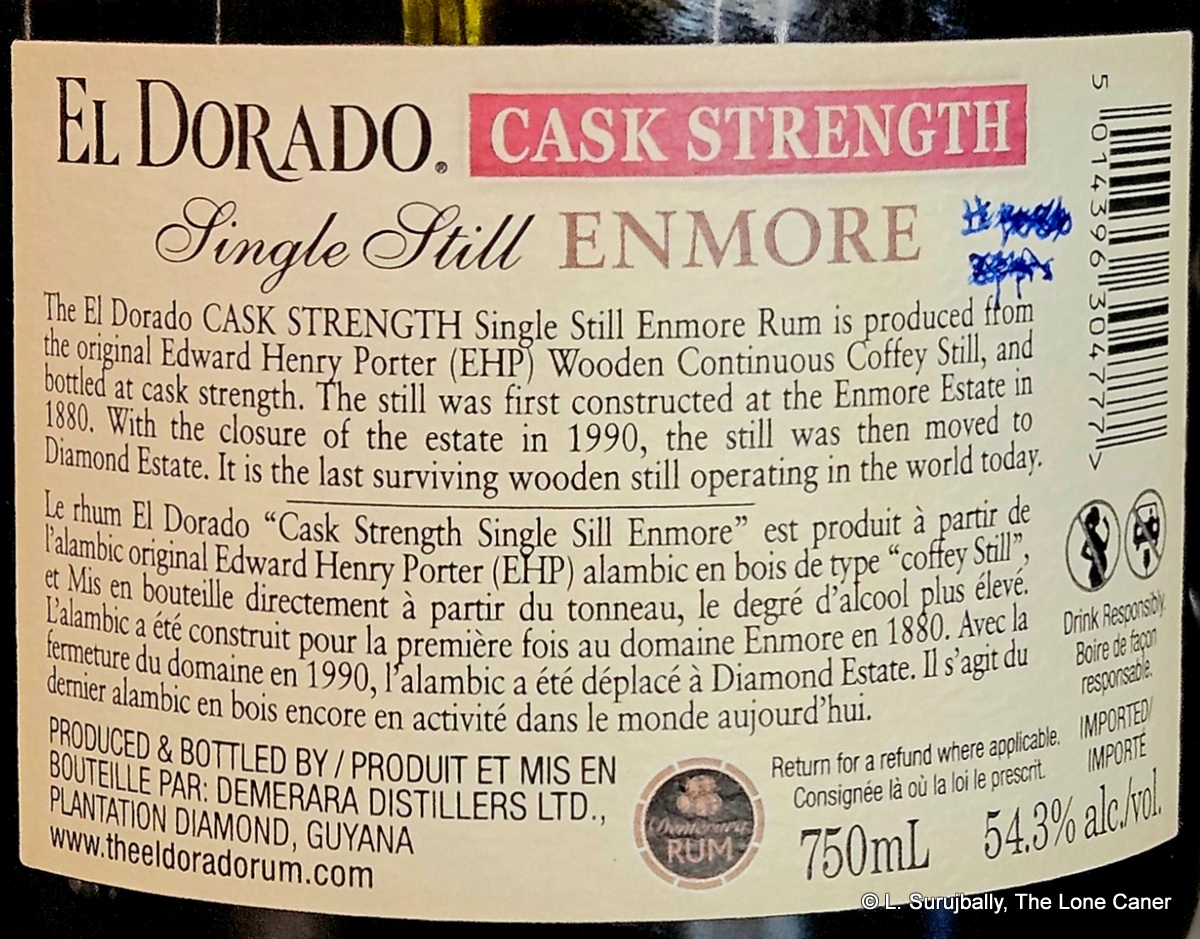 I am going to score this at 89, but advise readers to be careful with that number: it’s based on the experience I’ve had with scores of rums from Guyana over the years, so I know why I award the points. The rum is excellent, showcases the still wonderfully, and has that sense of individualistic and unique character which I personally prize: however, for those whose experience or preferences bend towards softer and more carefully blended rums from Guyana (like the standard lineup of 5, 8, 12, 15 and 21 year olds) may find a single still offering to be too strange, or different, for easy drinking. One should, I believe, have a decent knowledge of the heritage stills to appreciate their uniqueness, because although the stills’ qualities are evident here, so are some of the weaknesses, the same weaknesses that have heretofore led DDL to always blend them, never release them individually.
I am going to score this at 89, but advise readers to be careful with that number: it’s based on the experience I’ve had with scores of rums from Guyana over the years, so I know why I award the points. The rum is excellent, showcases the still wonderfully, and has that sense of individualistic and unique character which I personally prize: however, for those whose experience or preferences bend towards softer and more carefully blended rums from Guyana (like the standard lineup of 5, 8, 12, 15 and 21 year olds) may find a single still offering to be too strange, or different, for easy drinking. One should, I believe, have a decent knowledge of the heritage stills to appreciate their uniqueness, because although the stills’ qualities are evident here, so are some of the weaknesses, the same weaknesses that have heretofore led DDL to always blend them, never release them individually.
That may be because distillate from the Enmore still takes some time to get to the point, and some effort by the distillers to bring to its full potential. It’s always been hit or miss for me, some succeeding, others not quite making it, with few editions truly ascending to the heights, and those that do are almost all from the indie bottlers. For my money, here, DDL really has managed to come out with something almost as good as the Rare Edition R2 1990 20 year old, younger and at a lesser price. Others may disagree, but with this cask strength edition, DDL has captured that elusive lightning in the bottle, and made a Demerara style rum that really is a cut above the ordinary. Anyone who tries it will likely leave with a greater appreciation of not only the single barrel expressions (at whatever strength) but why they are so special.
(#1132)(89/100) ⭐⭐⭐⭐
Other notes
- Video recap link
- It is the upswing of the rum drinking public’s interest in those stills’ outputs by independent bottlers (most notably Velier, though they were not the first), that led DDL to head in this direction, first with the 2007 “cricket bat” rums, 12- and 15-year old “wine finished” editions, the Rare Editions, then the Experimental “Blended in the Barrel” releases… and now these. My advice for those who are genuinely curious and now diving into these waters, is to go for the 40% expressions (which are also cheaper), rather than going straight for the full proof line.
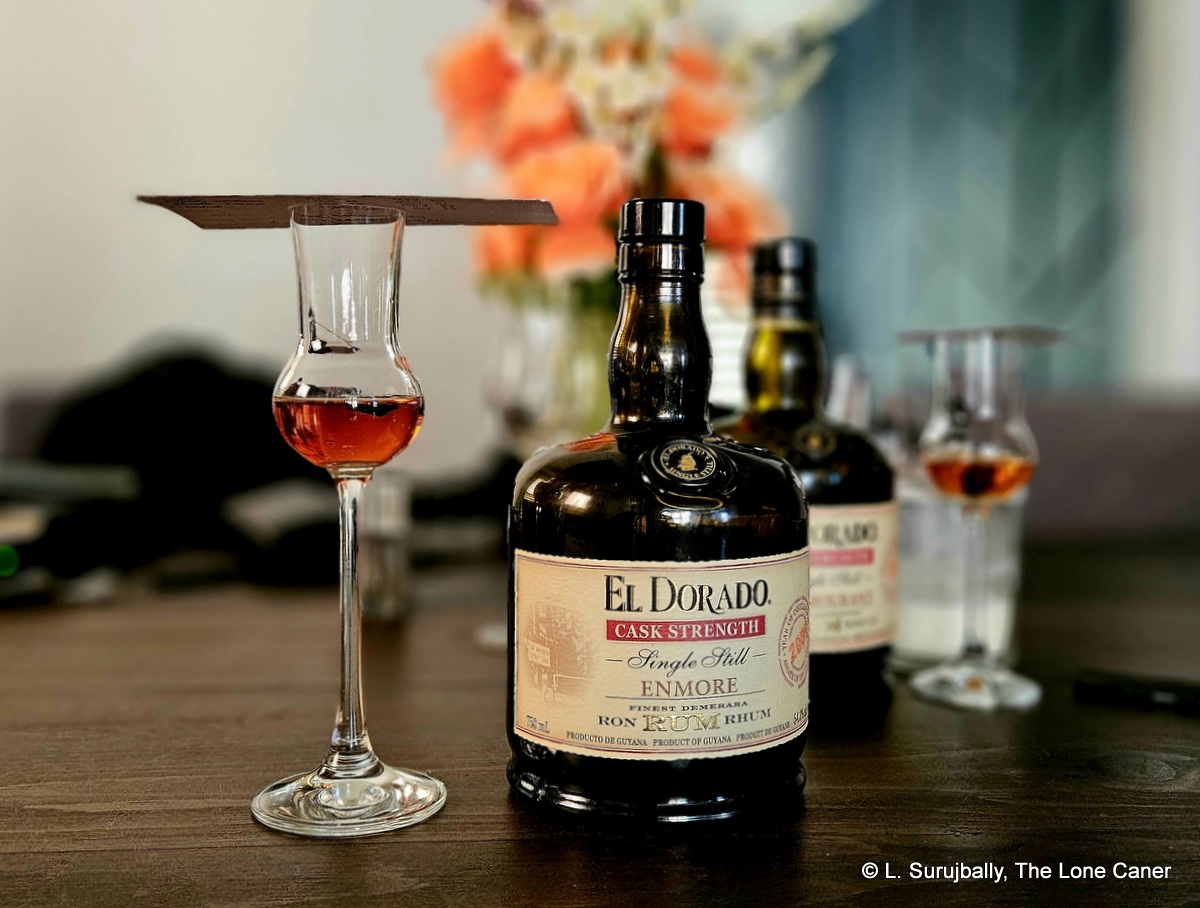
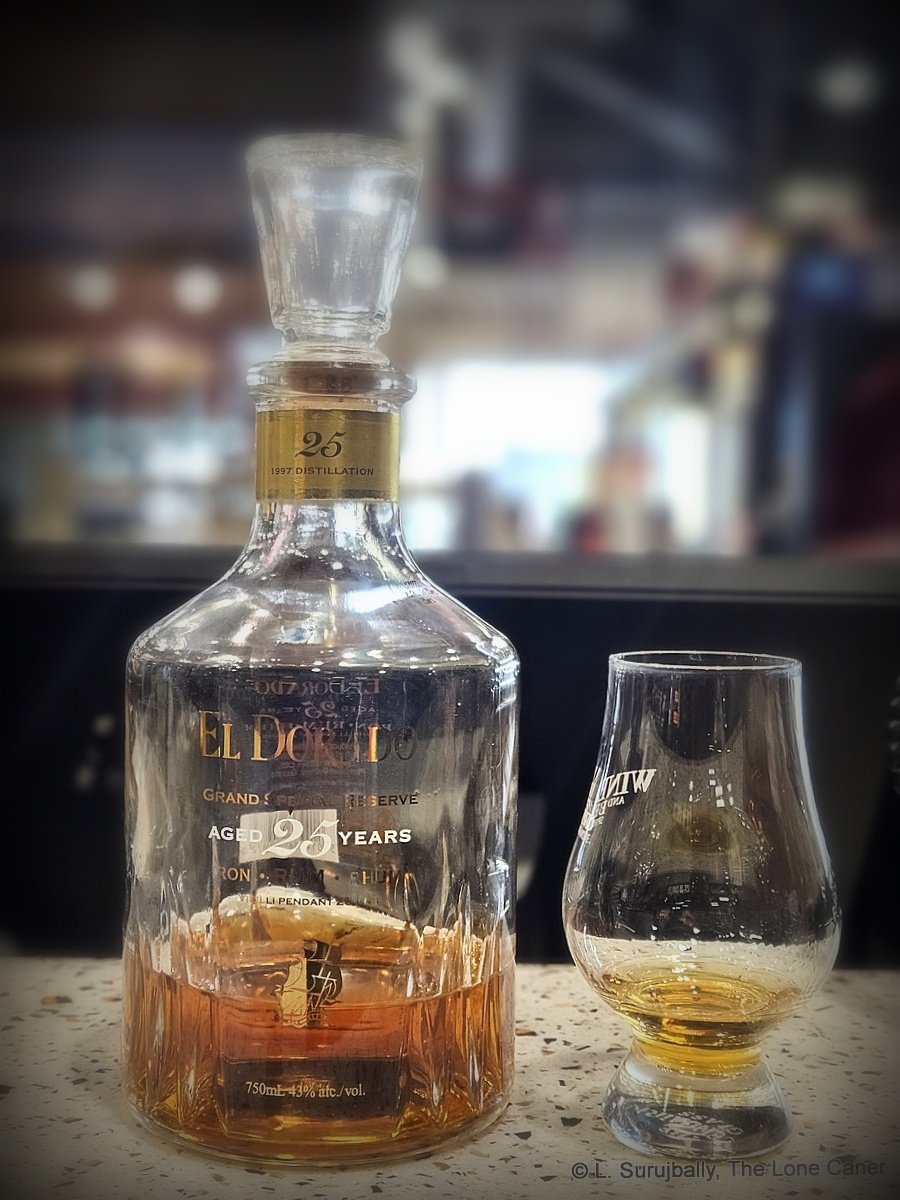
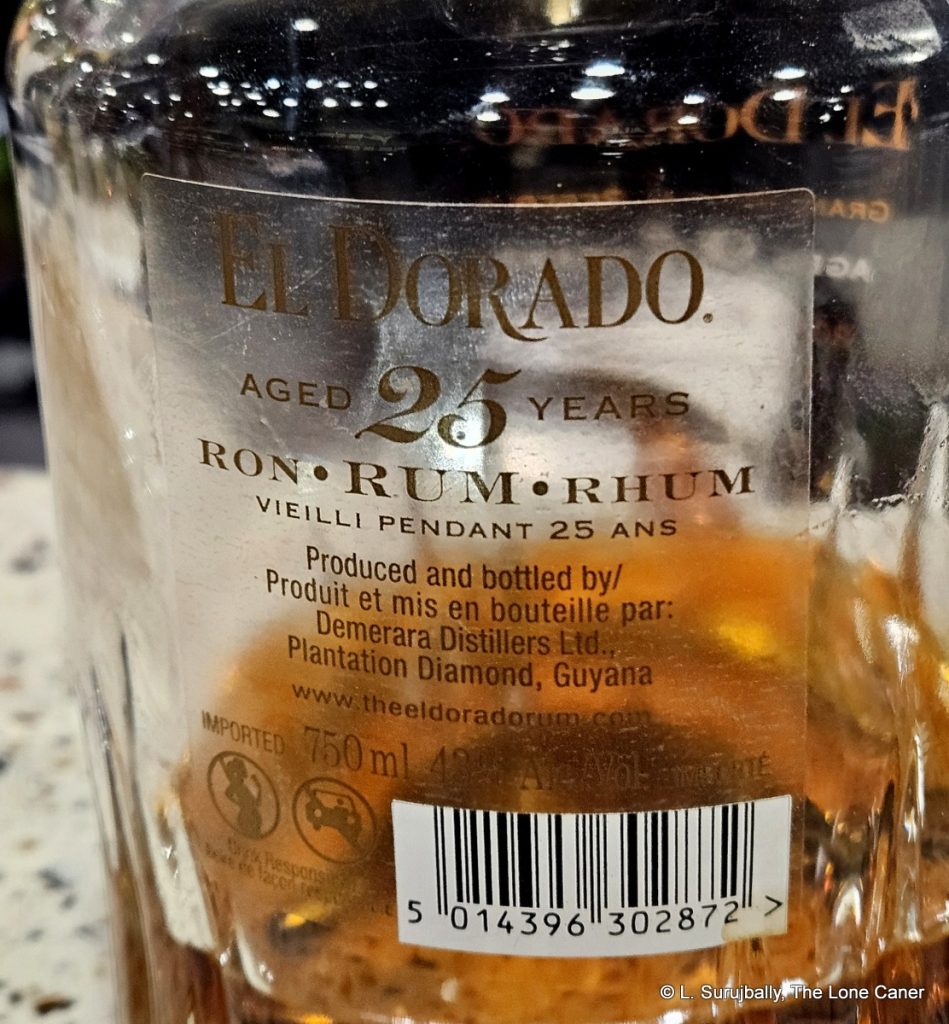
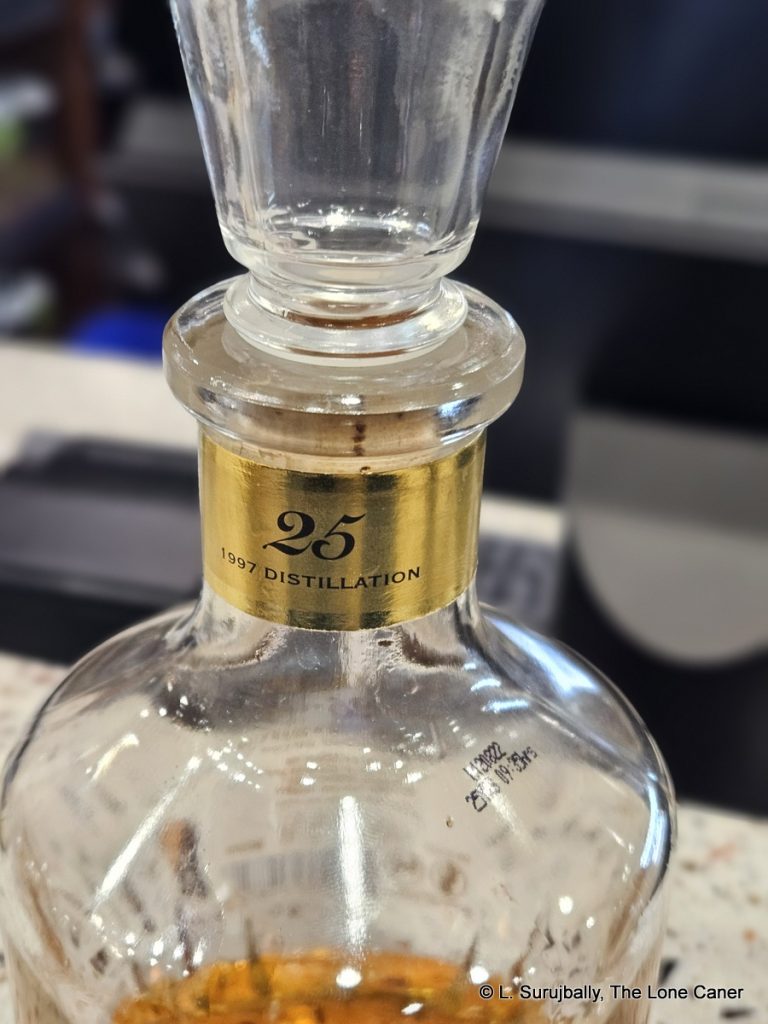
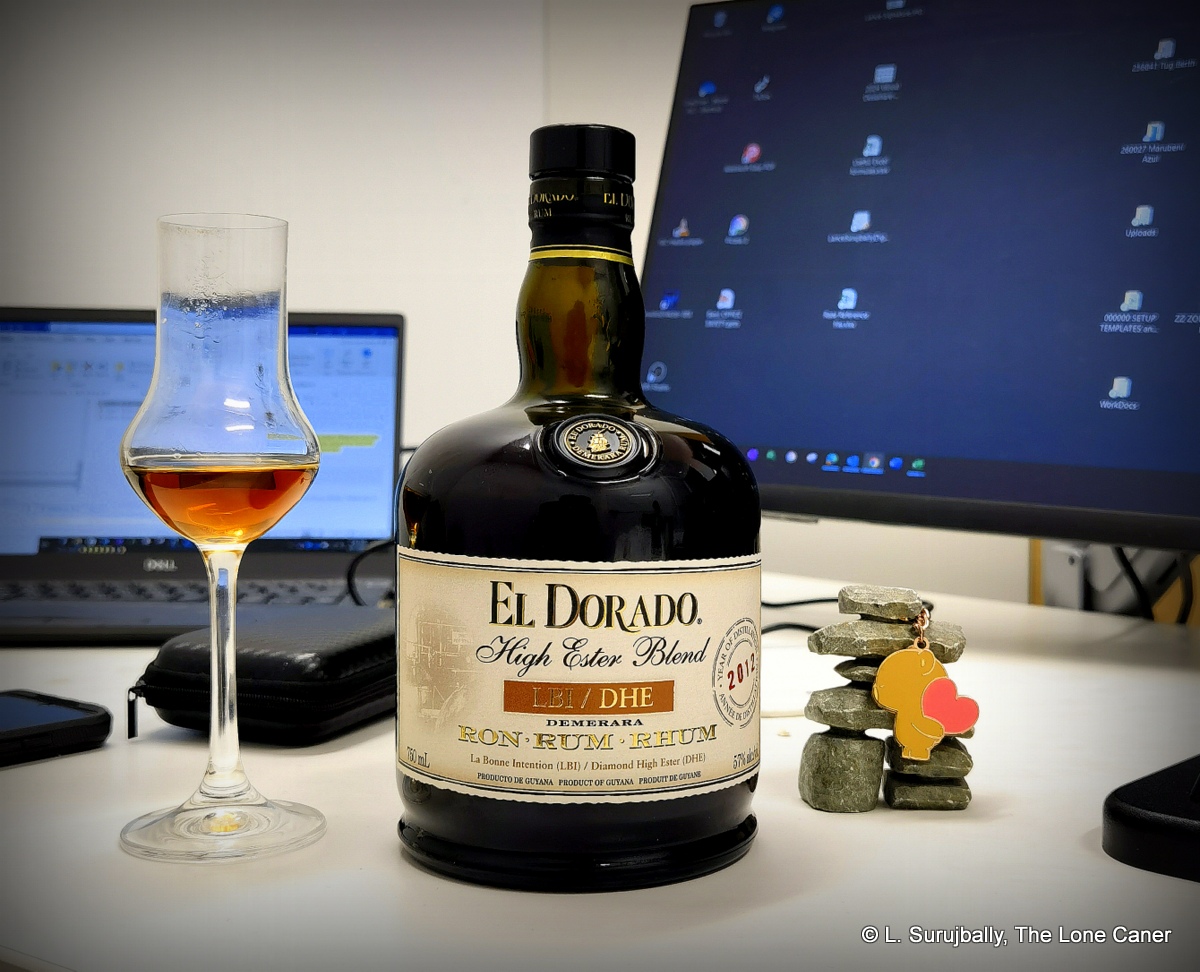
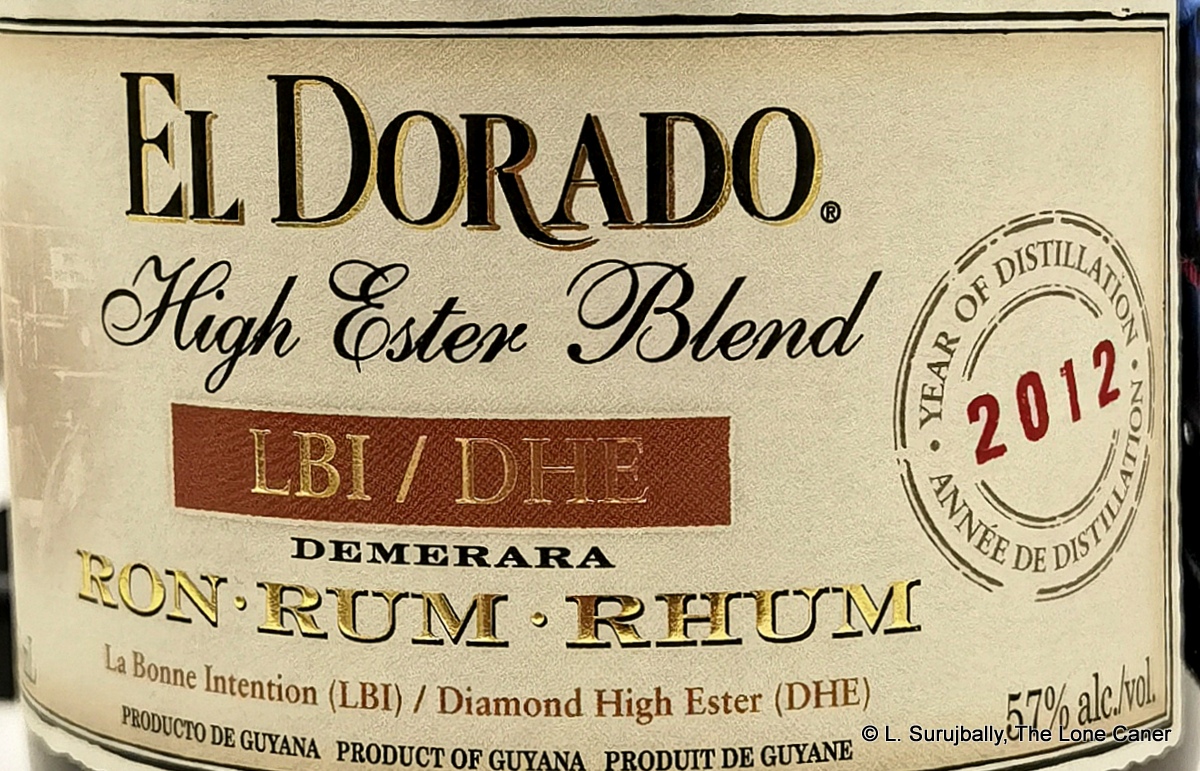
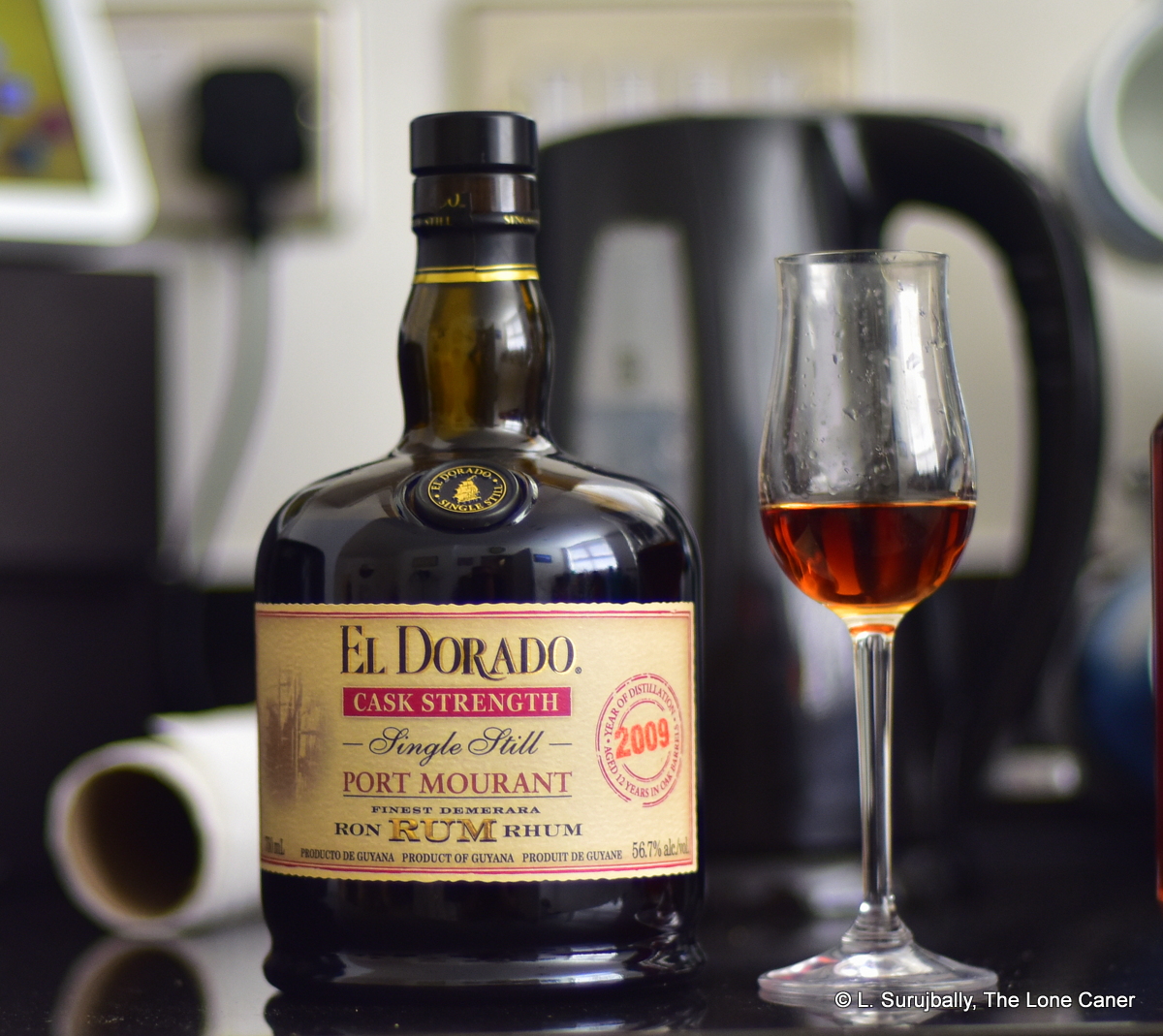
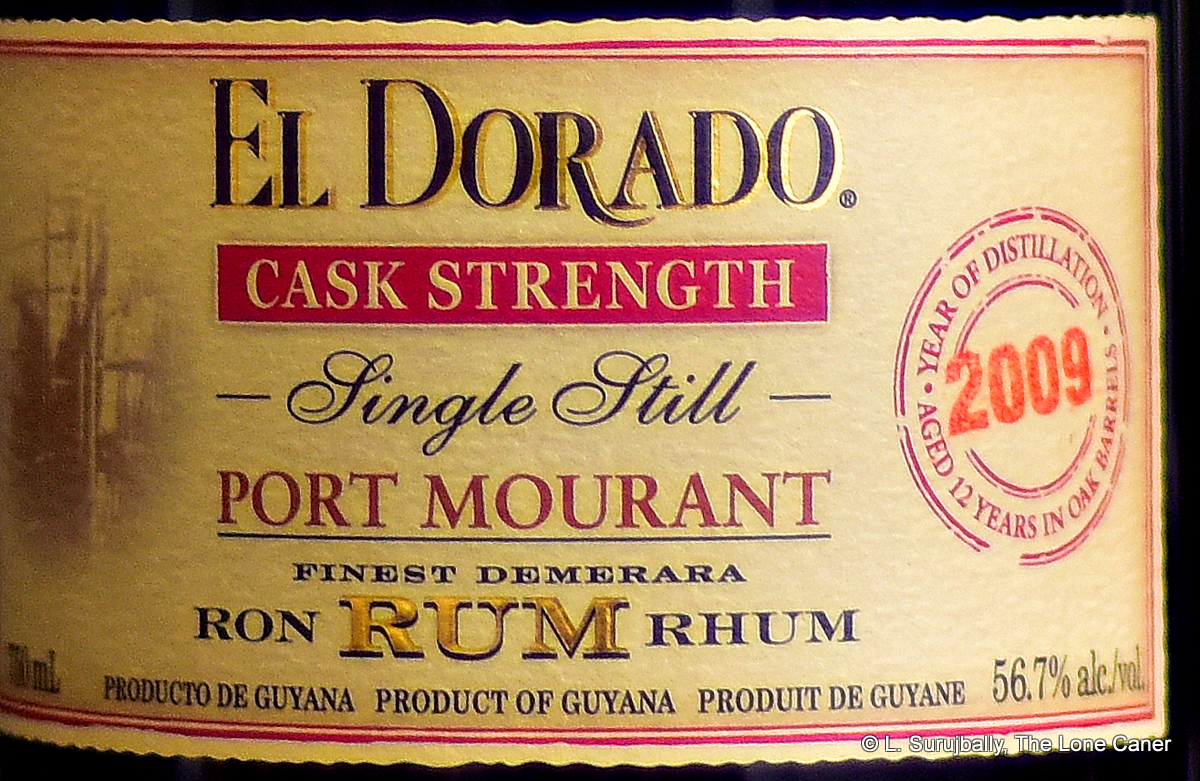
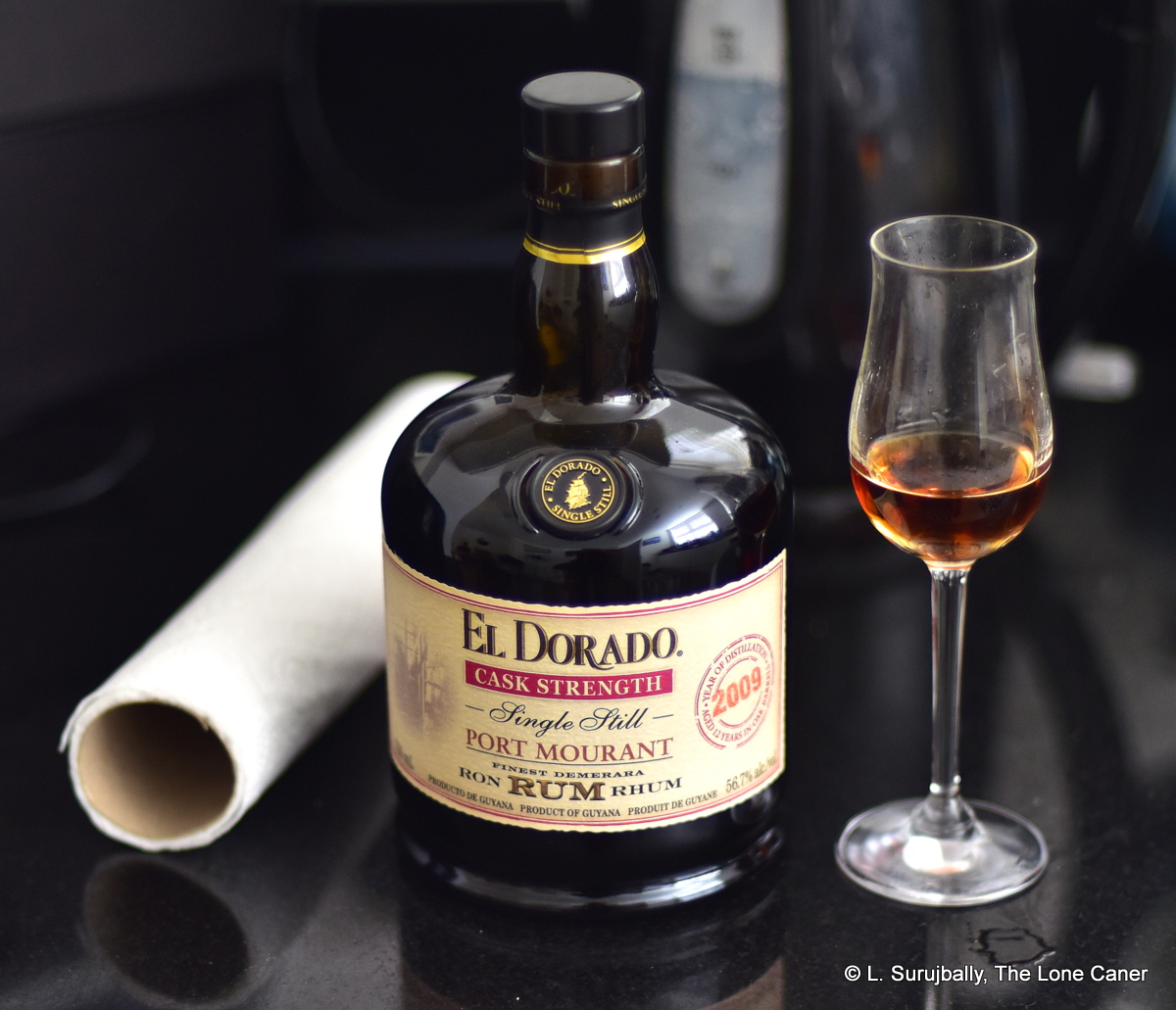
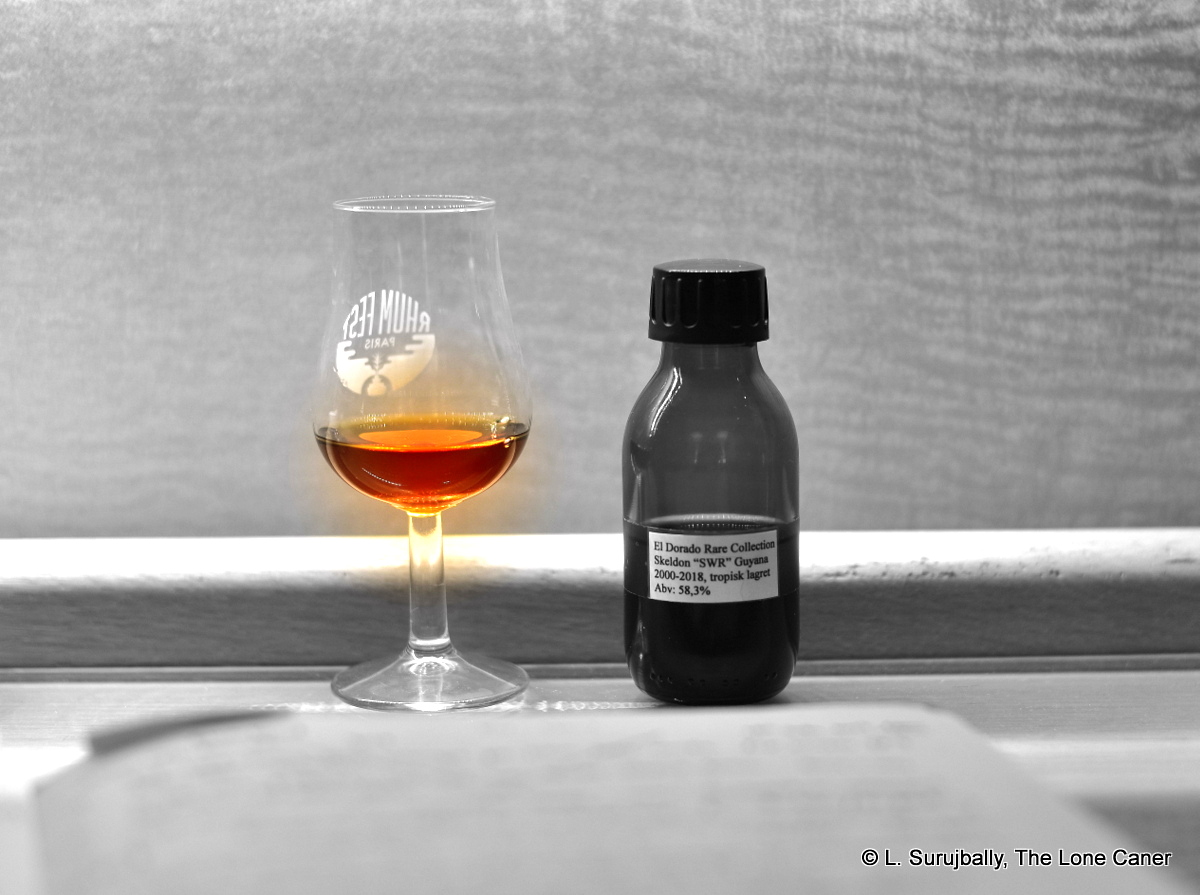
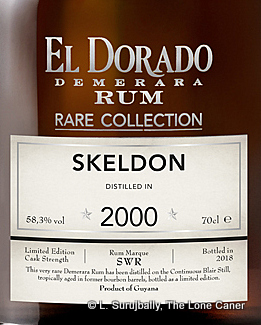 Its standout aspect was how smooth it came across when tasted. As with the Albion we looked at before, the rum didn’t profile like anywhere near its true strength, was warm and firm and tasty, trending a bit towards being over-oaked and ever-so-slightly too tannic. But those powerful notes of unsweetened cooking chocolate, creme brulee, caramel, dulce de leche, molasses and cumin mitigated the wooden bite and provided a solid counterpoint into which subtler marzipan and mint-chocolate hints could be occasionally noticed, flitting quietly in and out. The finish continued these aspects while gradually fading out, and with some patience and concentration, port-flavoured tobacco, brown sugar and cumin could be discerned.
Its standout aspect was how smooth it came across when tasted. As with the Albion we looked at before, the rum didn’t profile like anywhere near its true strength, was warm and firm and tasty, trending a bit towards being over-oaked and ever-so-slightly too tannic. But those powerful notes of unsweetened cooking chocolate, creme brulee, caramel, dulce de leche, molasses and cumin mitigated the wooden bite and provided a solid counterpoint into which subtler marzipan and mint-chocolate hints could be occasionally noticed, flitting quietly in and out. The finish continued these aspects while gradually fading out, and with some patience and concentration, port-flavoured tobacco, brown sugar and cumin could be discerned.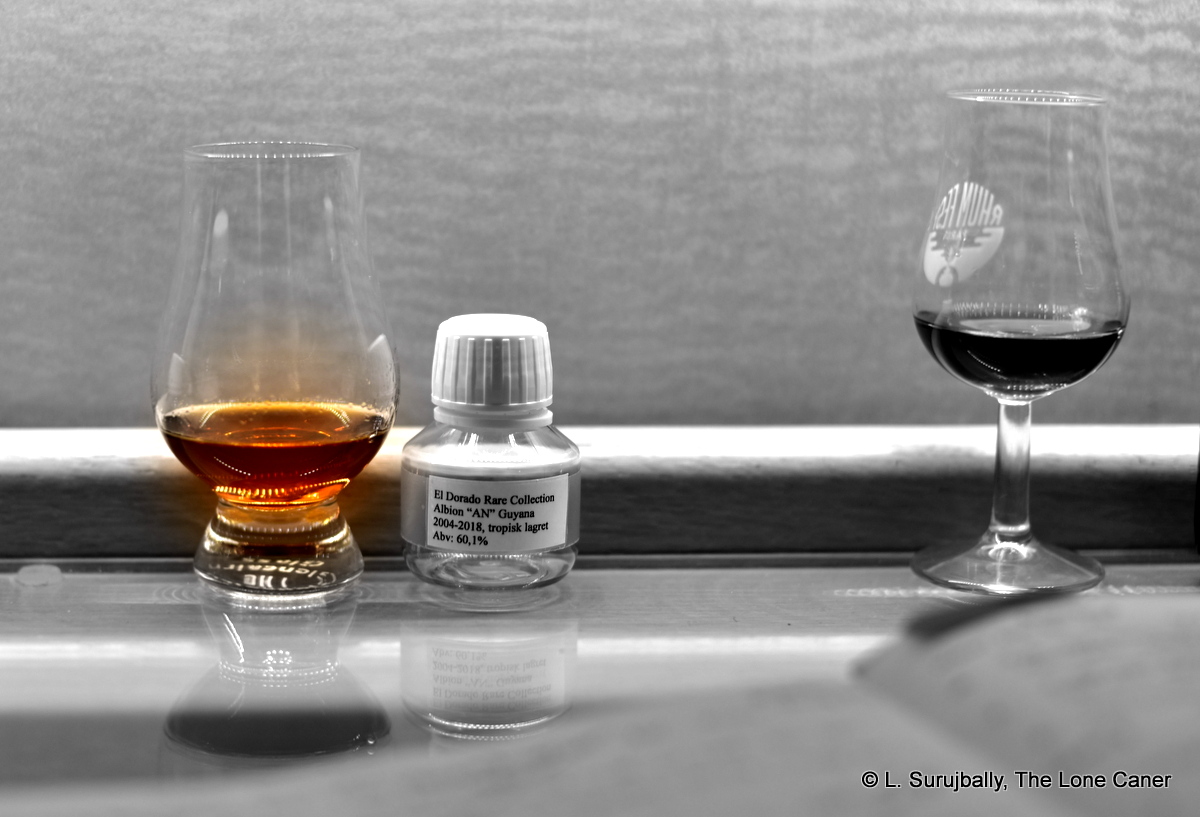
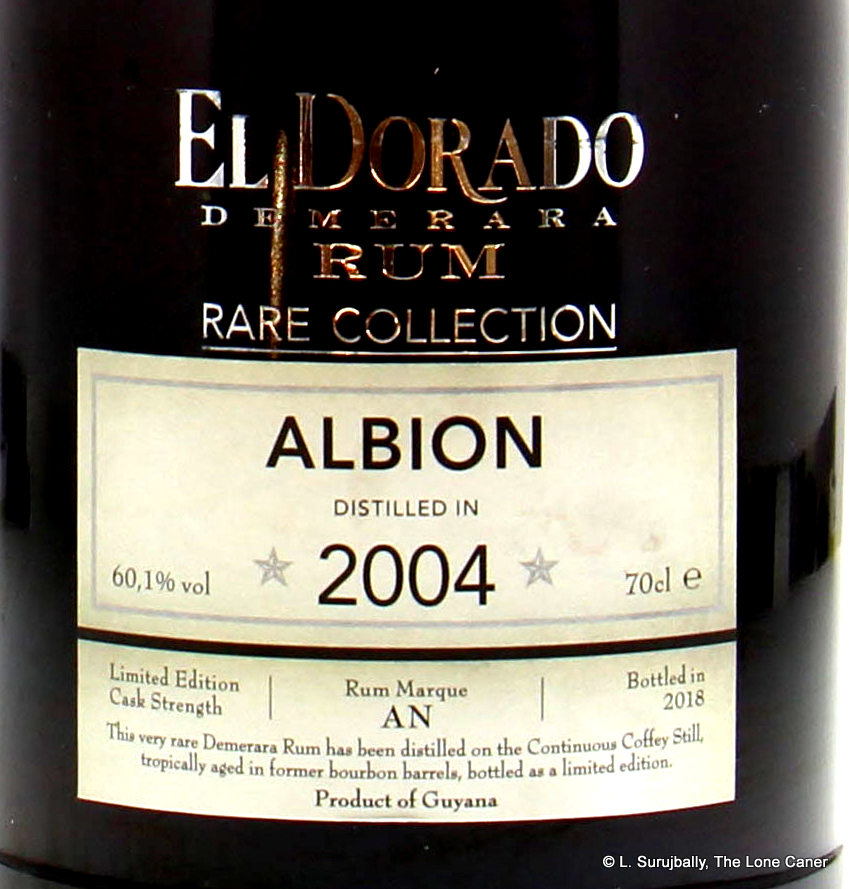
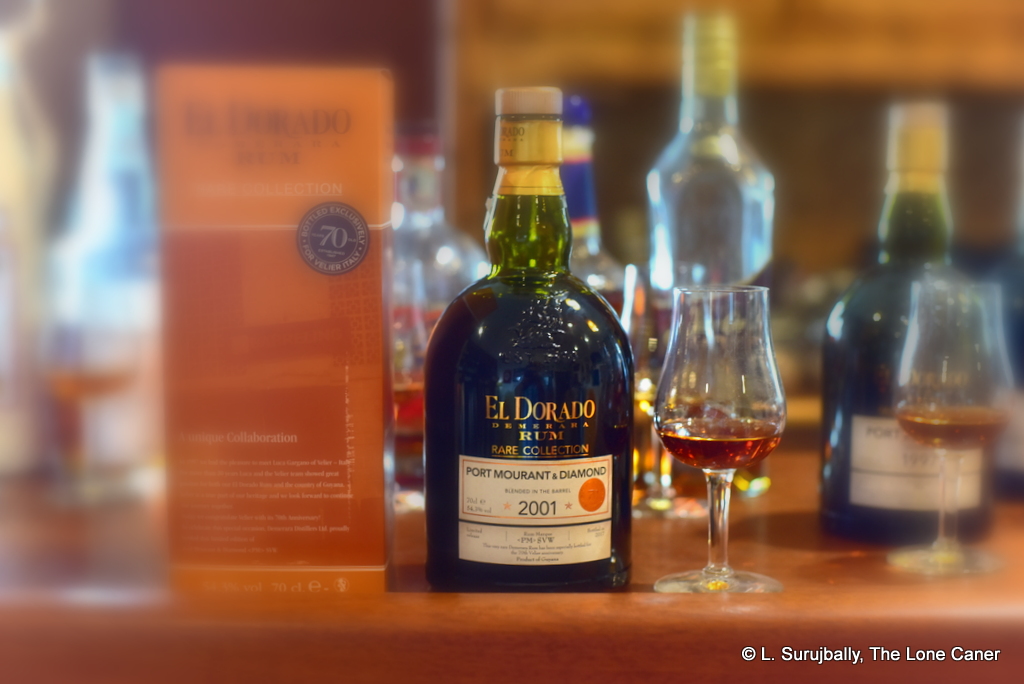
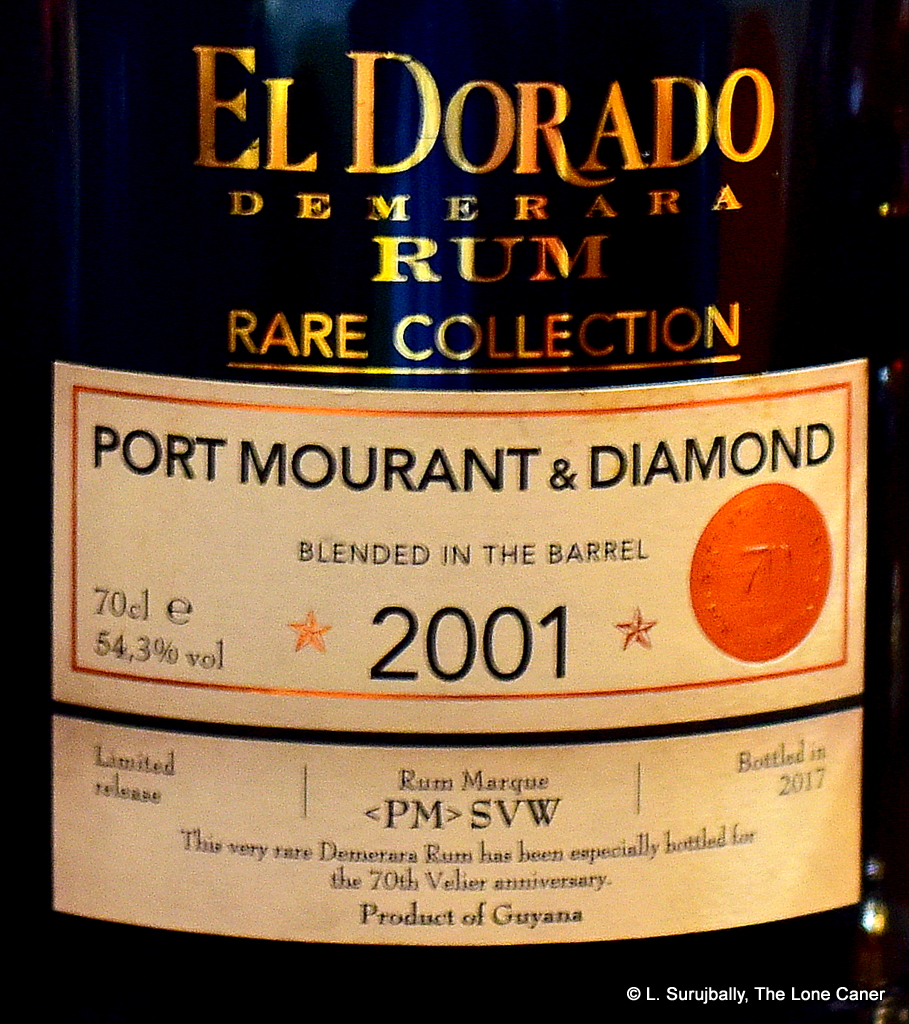 Knowing the Demerara rum profiles as well as I do, and having tried so many of them, these days I treat them all like wines from a particular chateau…or like James Bond movies: I smile fondly at the familiar, and look with interest for variations. Here that was the way to go. The nose suggested an almost woody men’s cologne: pencil shavings, some rubber and sawdust a la PM, and then the flowery notes of a bull squishing happily way in the fruit bazaar. It was sweet, fruity, dark, intense and had a bedrock of caramel, molasses, toffee, coffee, with a great background of strawberry ice cream, vanilla, licorice and ripe yellow mango slices so soft they drip juice. The balance between the two stills’ output was definitely a cut above the ordinary.
Knowing the Demerara rum profiles as well as I do, and having tried so many of them, these days I treat them all like wines from a particular chateau…or like James Bond movies: I smile fondly at the familiar, and look with interest for variations. Here that was the way to go. The nose suggested an almost woody men’s cologne: pencil shavings, some rubber and sawdust a la PM, and then the flowery notes of a bull squishing happily way in the fruit bazaar. It was sweet, fruity, dark, intense and had a bedrock of caramel, molasses, toffee, coffee, with a great background of strawberry ice cream, vanilla, licorice and ripe yellow mango slices so soft they drip juice. The balance between the two stills’ output was definitely a cut above the ordinary.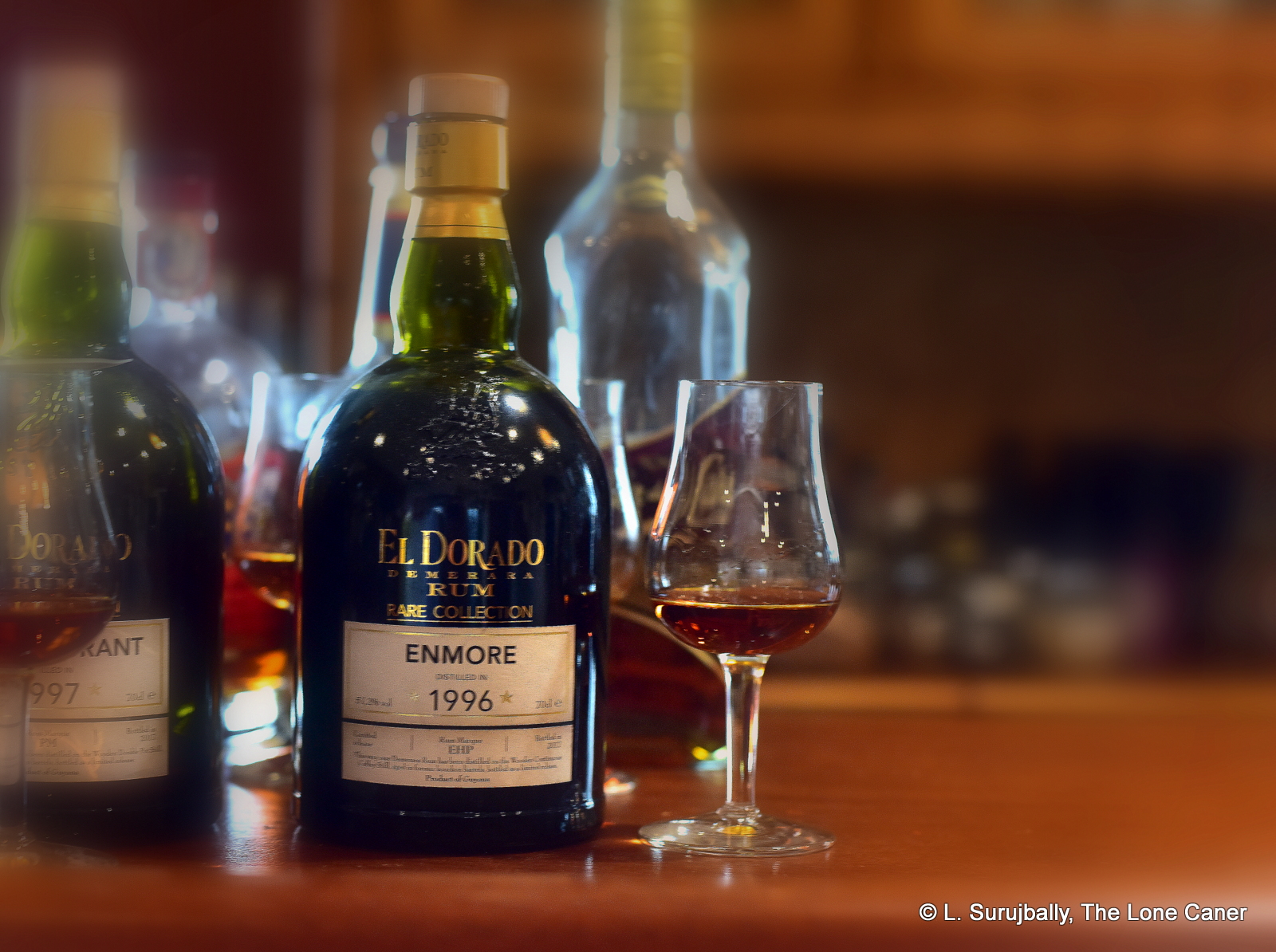
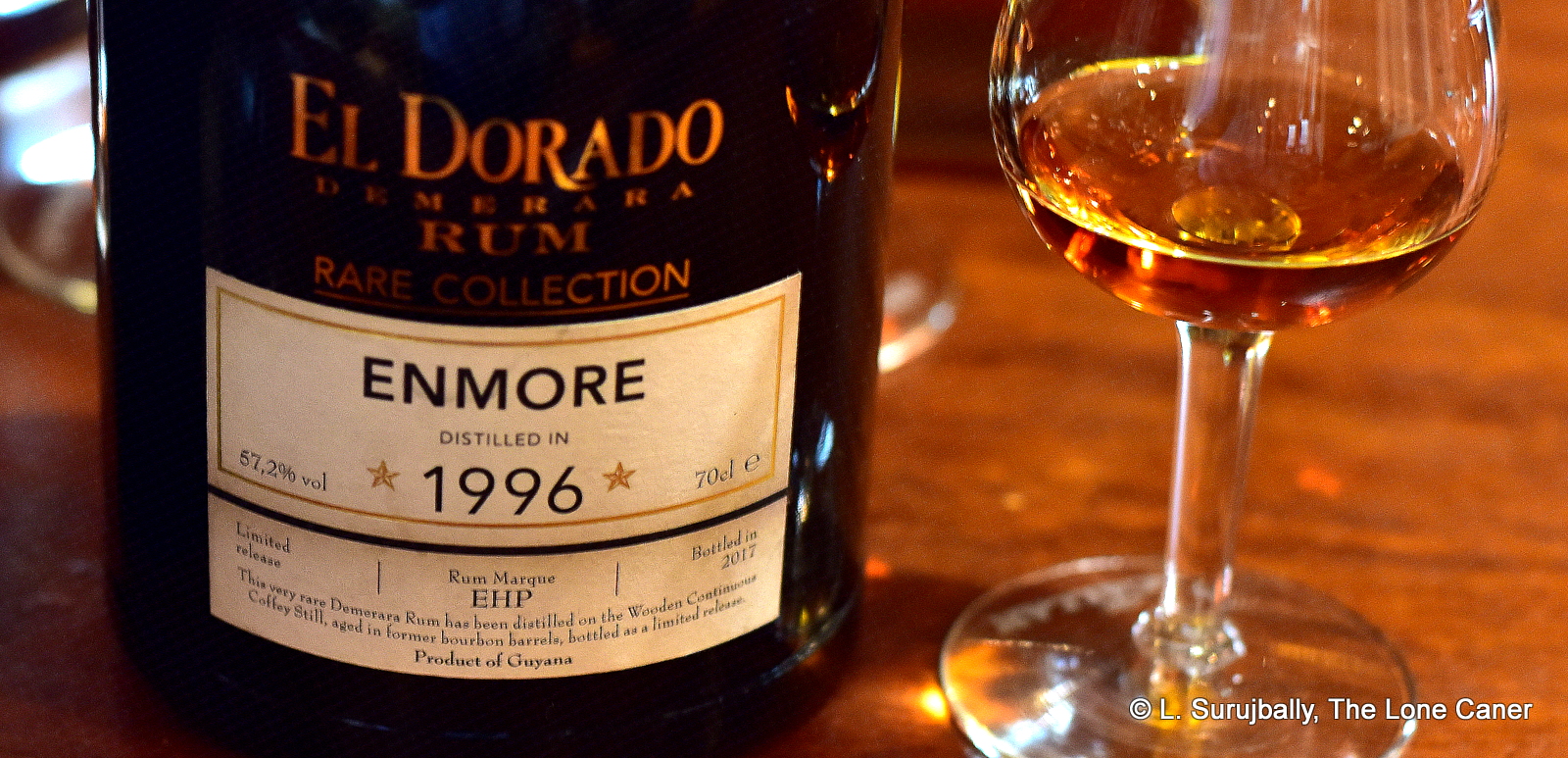
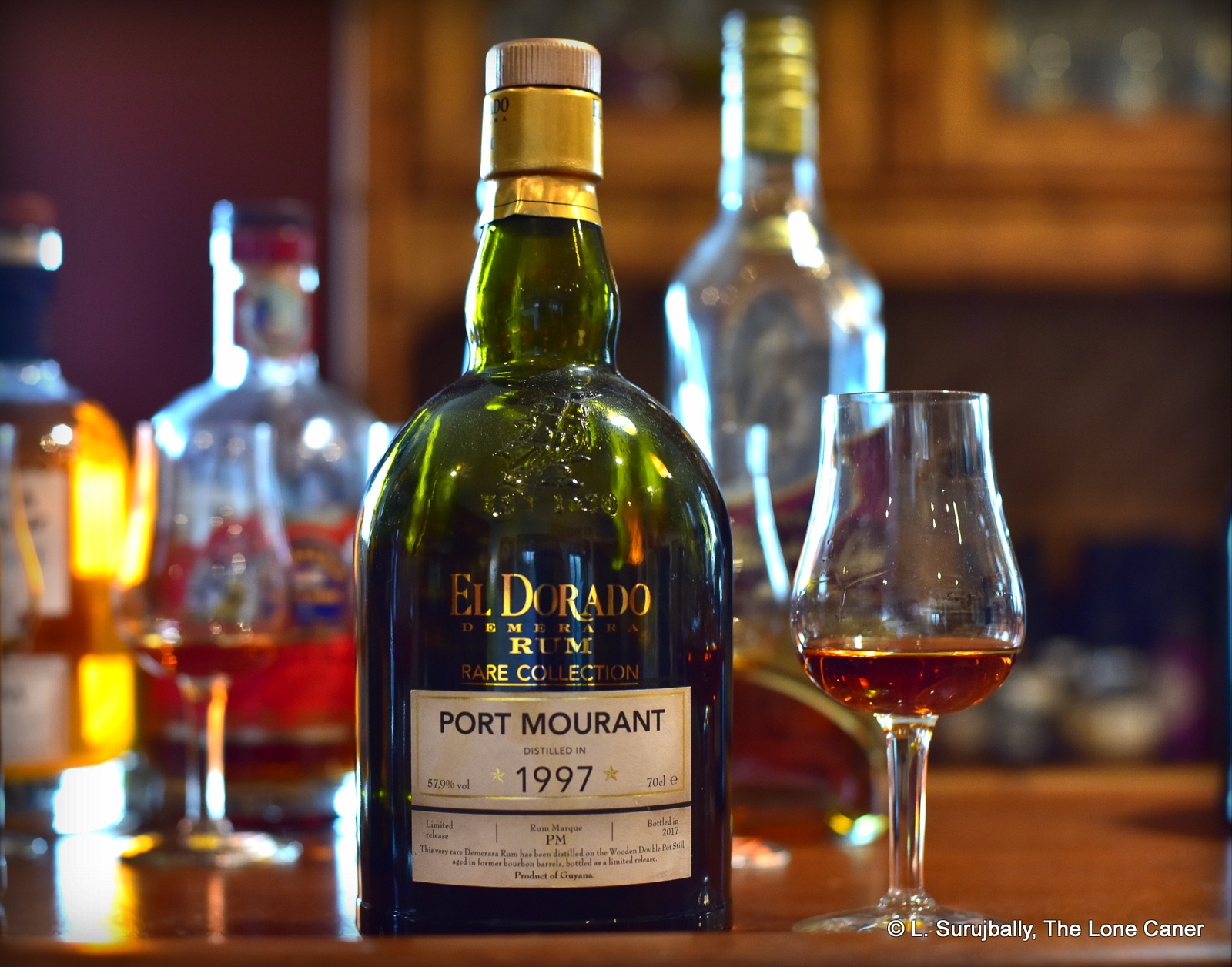
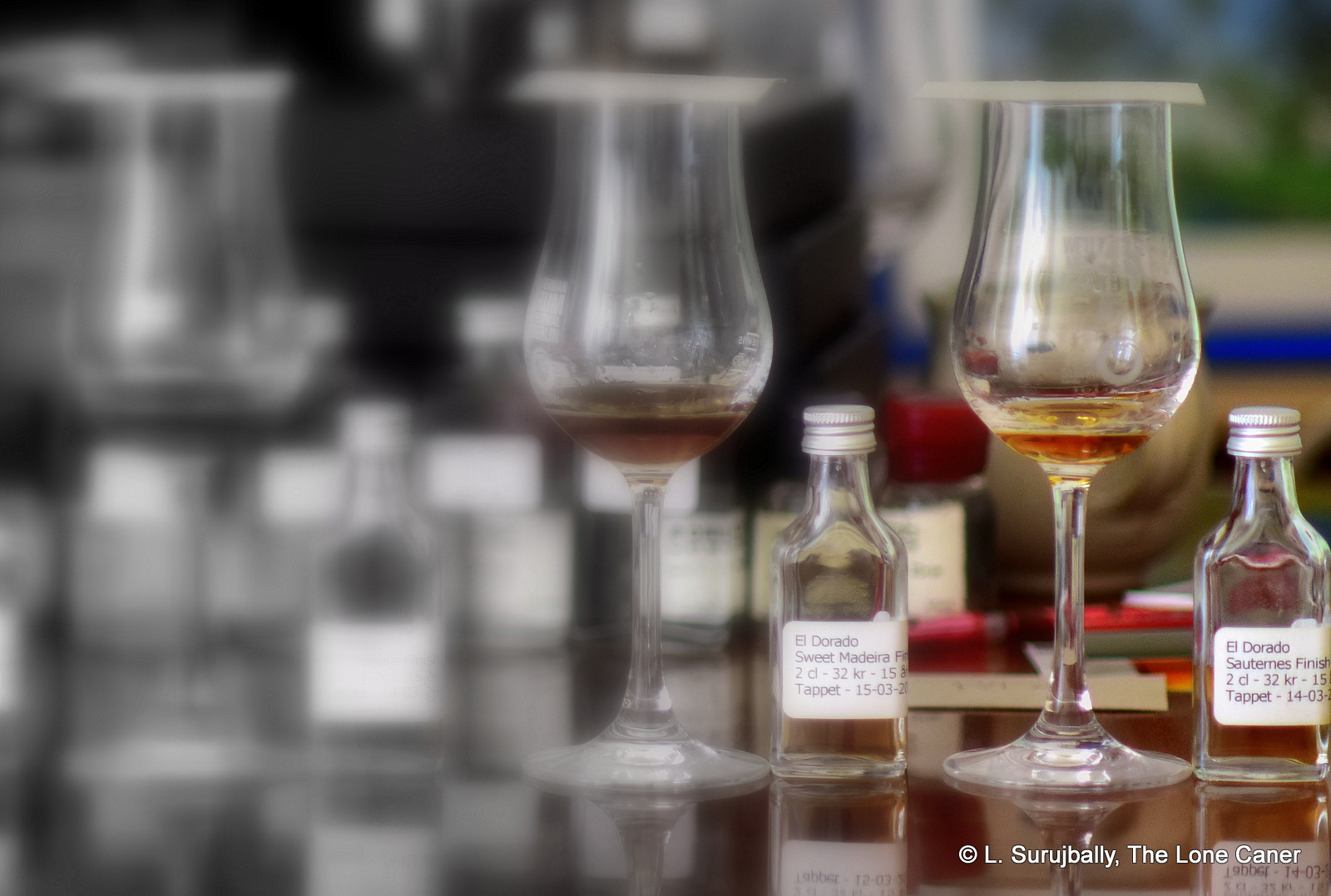
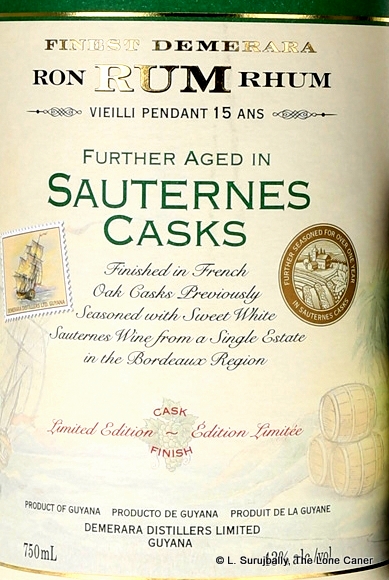 Nose – In a subtle way this is different from the others. It opens with aromatic tobacco, white almond-stuffed chocolate and nail polish before remembering what it’s supposed to be and retreating to the standard profile of salty caramel, molasses, vanilla, cherries, raisins, lemon peel and oak, quite a bit of oak, all rather sere.
Nose – In a subtle way this is different from the others. It opens with aromatic tobacco, white almond-stuffed chocolate and nail polish before remembering what it’s supposed to be and retreating to the standard profile of salty caramel, molasses, vanilla, cherries, raisins, lemon peel and oak, quite a bit of oak, all rather sere.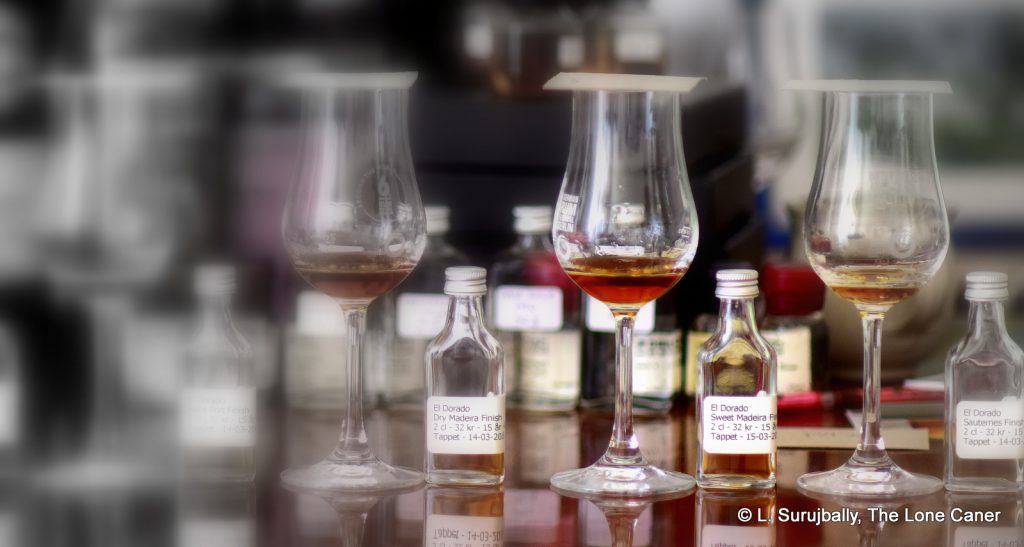
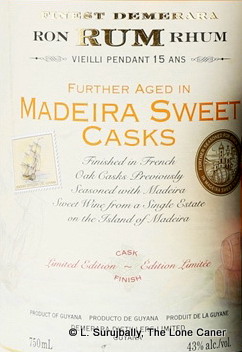 Nose – Leaving aside a slight sweetish note (which I suppose is to be expected, though still not entirely welcome), it noses relatively darker and richer and fruitier than just about all the others except the “Dry”…within the limits of its strength and mild adulteration. Peaches, raisins, cinnamon, cloves, caramel, peanut butter, cherries in syrup and candied oranges, even a little bitter chocolate. It’s all rather delicate, but quite pleasant.
Nose – Leaving aside a slight sweetish note (which I suppose is to be expected, though still not entirely welcome), it noses relatively darker and richer and fruitier than just about all the others except the “Dry”…within the limits of its strength and mild adulteration. Peaches, raisins, cinnamon, cloves, caramel, peanut butter, cherries in syrup and candied oranges, even a little bitter chocolate. It’s all rather delicate, but quite pleasant.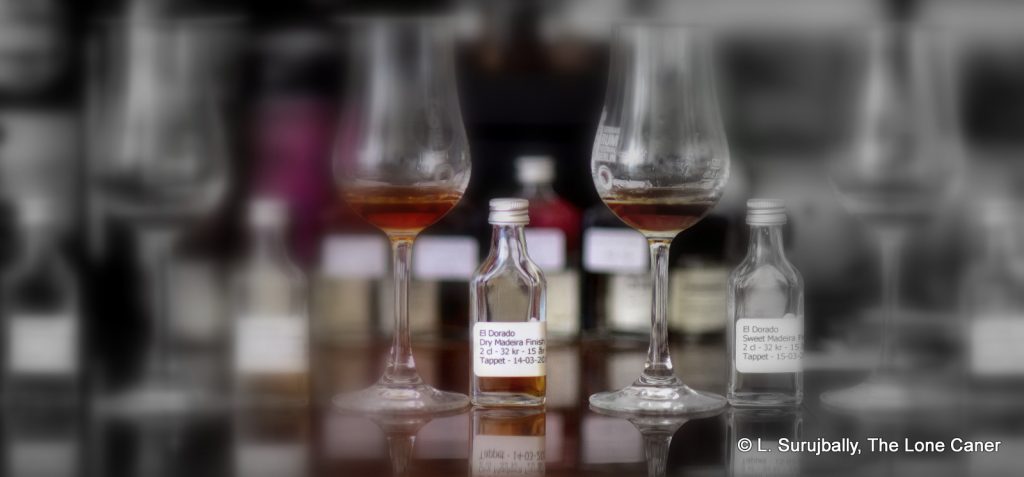
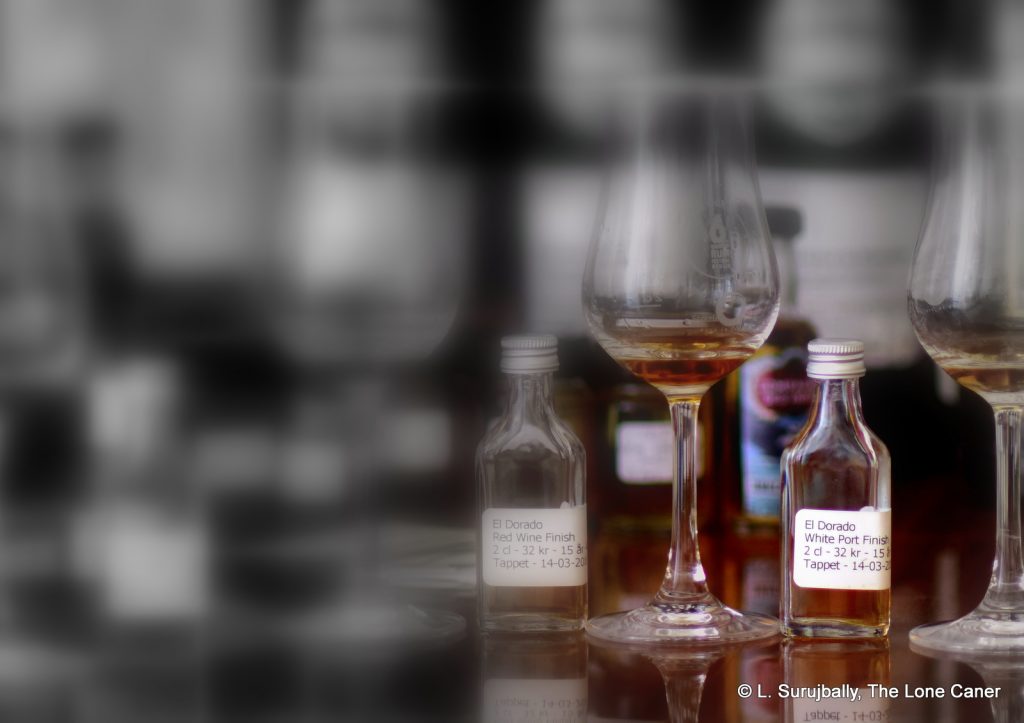
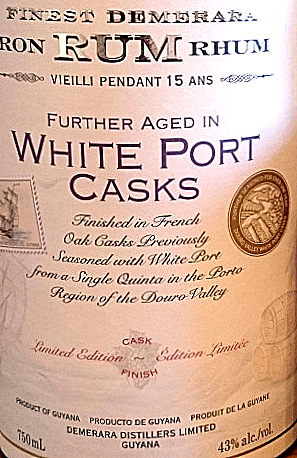 Nose – At first there didn’t seem to be much of anything there, it was so mild as to be lightly flavoured alcohol. But after some minutes it got into gear and revved up some, with a solid core of light brown sugar, molasses, salt caramel, some sweet soya. Not much deep fruitiness here, just light grapefruit, bananas and nuttiness, and sweet white chocolate.
Nose – At first there didn’t seem to be much of anything there, it was so mild as to be lightly flavoured alcohol. But after some minutes it got into gear and revved up some, with a solid core of light brown sugar, molasses, salt caramel, some sweet soya. Not much deep fruitiness here, just light grapefruit, bananas and nuttiness, and sweet white chocolate.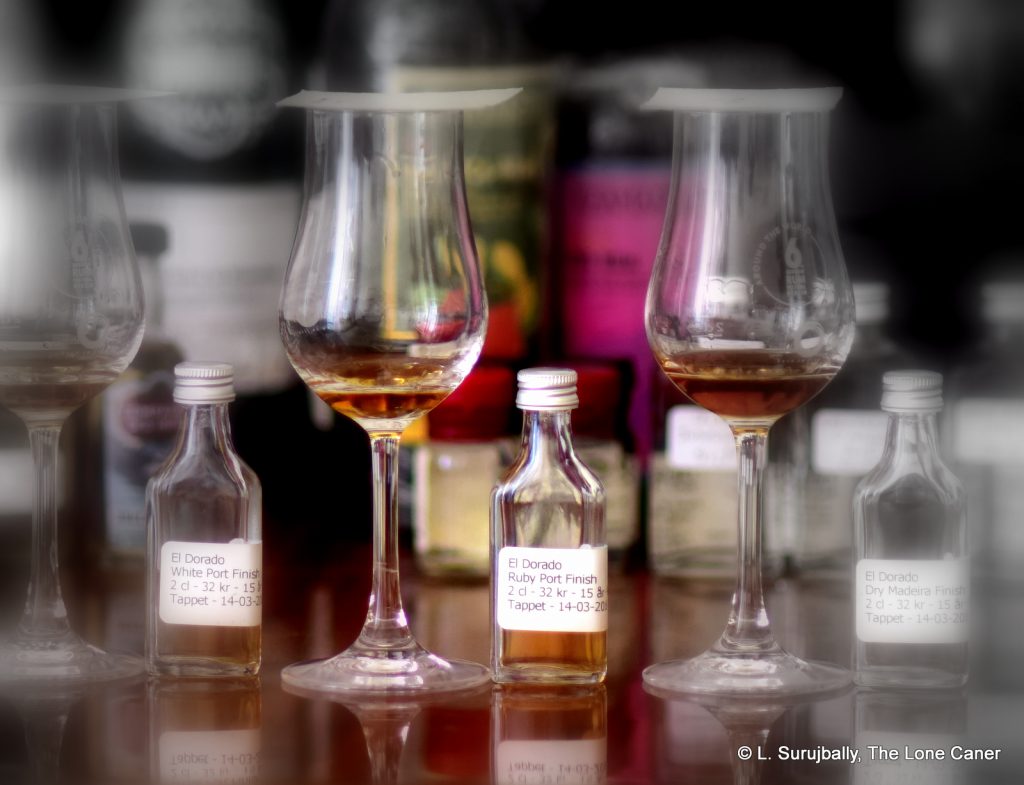
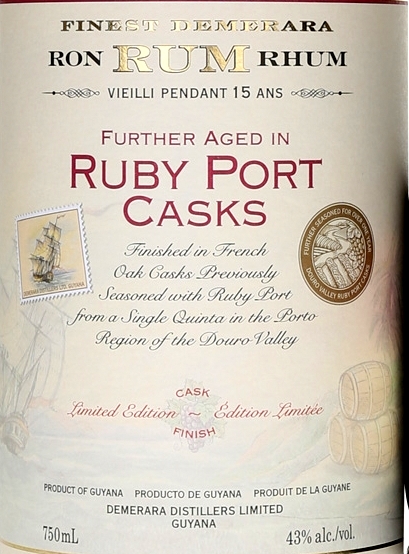 Nose – This has a light, sweet, almost delicate series of smells. There are acetones, flowers and some faint medicinal, varnish and glue aromas floating around (I liked those – they added something different), and initially the rum noses as surprisingly dry (another point I enjoyed). These then morph gradually into a more fruity melange – tinned cherries in syrup, ripe pears, pineapples, watermelons – while remaining quite crisp. It also hinted at salted caramel, crunchy peanut butter, breakfast spices and a little brine, and the balance among all these seemingly competing elements is handled really well.
Nose – This has a light, sweet, almost delicate series of smells. There are acetones, flowers and some faint medicinal, varnish and glue aromas floating around (I liked those – they added something different), and initially the rum noses as surprisingly dry (another point I enjoyed). These then morph gradually into a more fruity melange – tinned cherries in syrup, ripe pears, pineapples, watermelons – while remaining quite crisp. It also hinted at salted caramel, crunchy peanut butter, breakfast spices and a little brine, and the balance among all these seemingly competing elements is handled really well.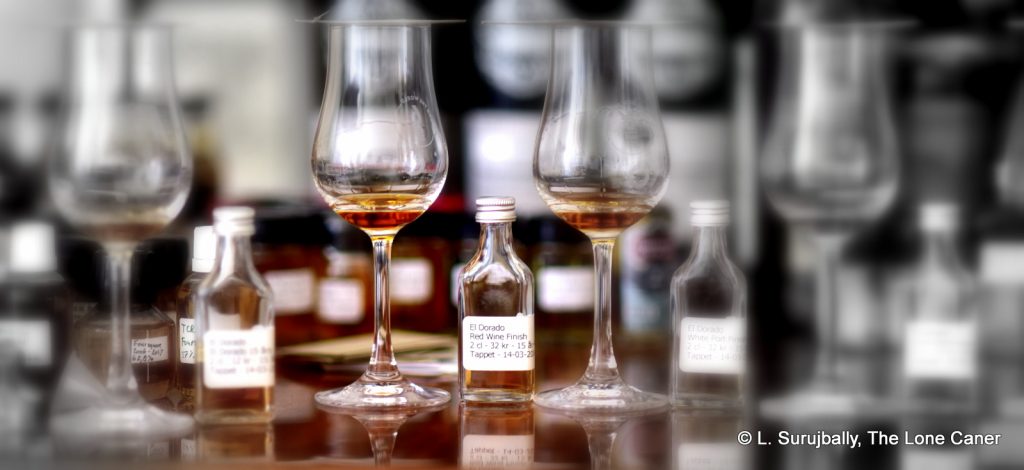
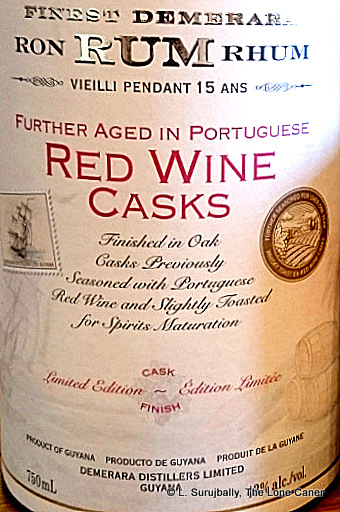 Nose – Somewhat dry and redolent of sawdust, accompanied by delicate flowers an acetones. Quite solid and lightly sweet, and deserves to be left to stand for a while, because after some minutes the molasses, caramel and light licorice notes characteristic of the line begin to make themselves felt, and are then in their turn dethroned by a deep fruitiness of ripe cherries, blackcurrants, plums, raisins and black grapes almost ready to spoil. In the background there’s some leather and citrus, neither strong enough to make any kind of serious impression.
Nose – Somewhat dry and redolent of sawdust, accompanied by delicate flowers an acetones. Quite solid and lightly sweet, and deserves to be left to stand for a while, because after some minutes the molasses, caramel and light licorice notes characteristic of the line begin to make themselves felt, and are then in their turn dethroned by a deep fruitiness of ripe cherries, blackcurrants, plums, raisins and black grapes almost ready to spoil. In the background there’s some leather and citrus, neither strong enough to make any kind of serious impression.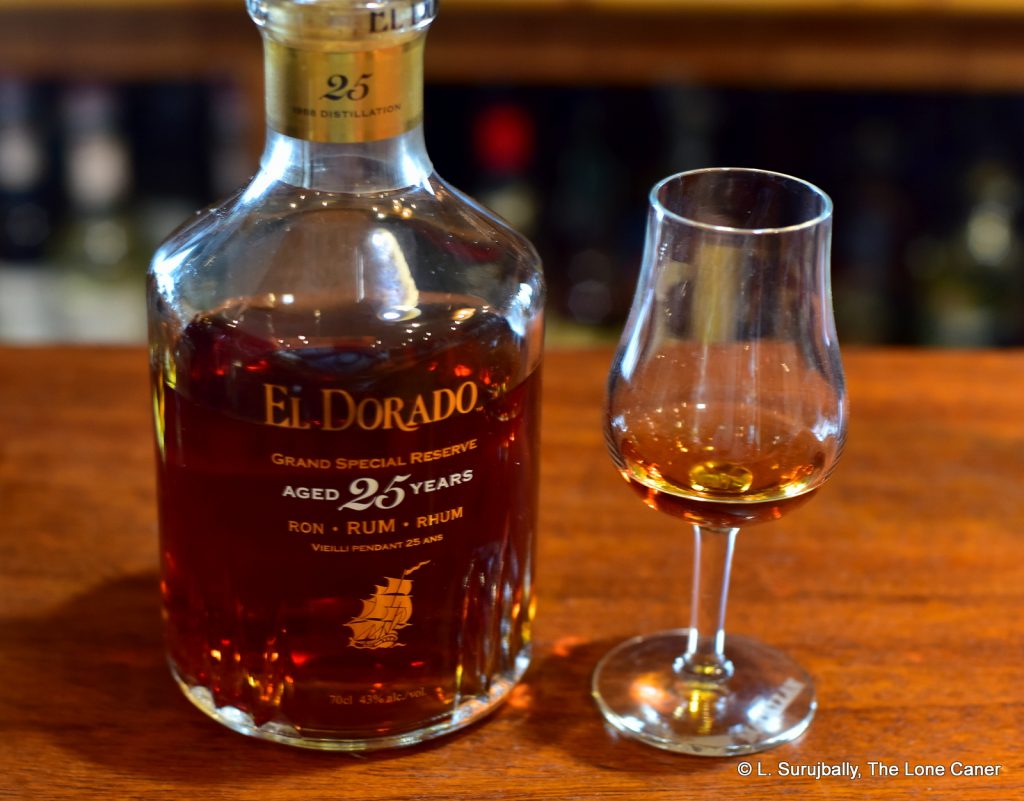
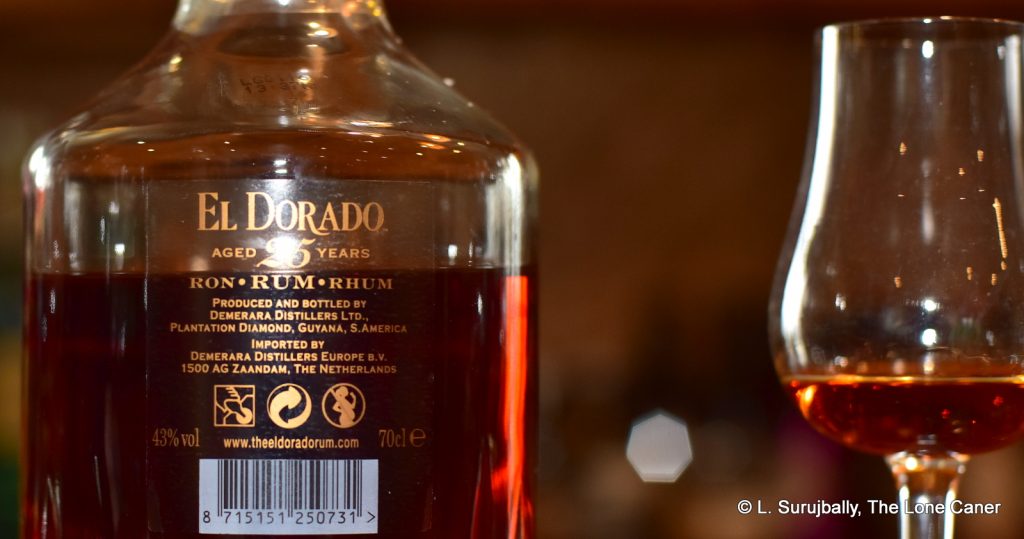
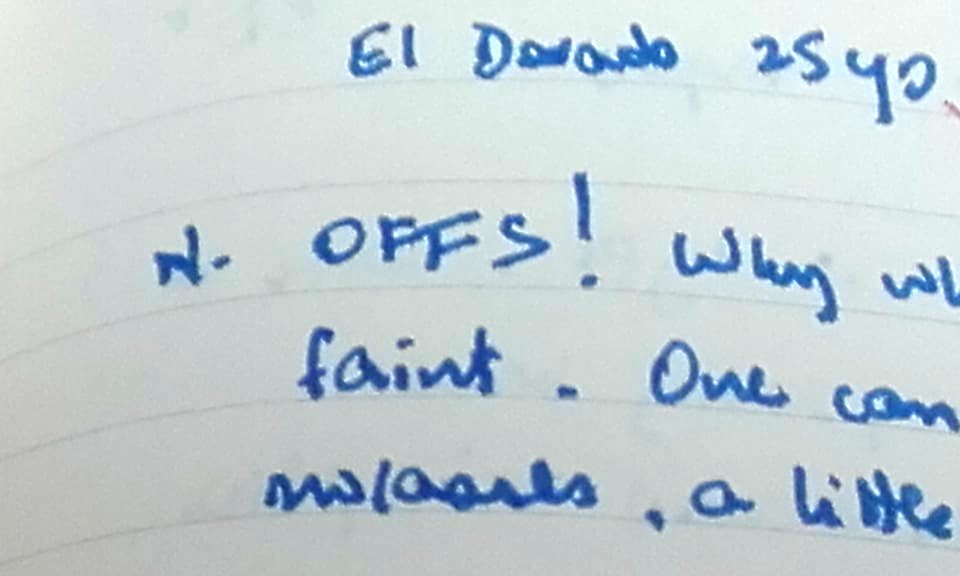
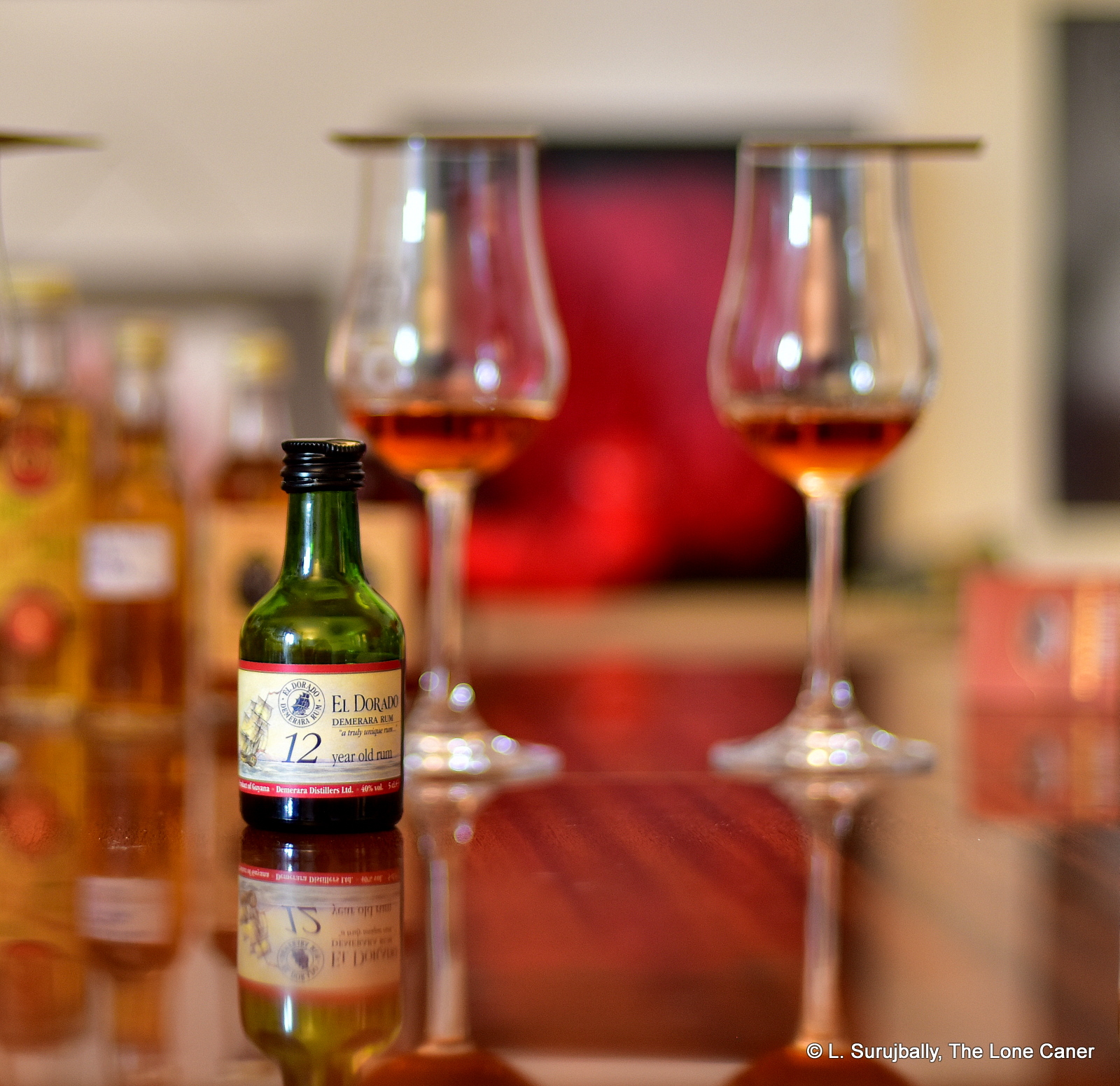
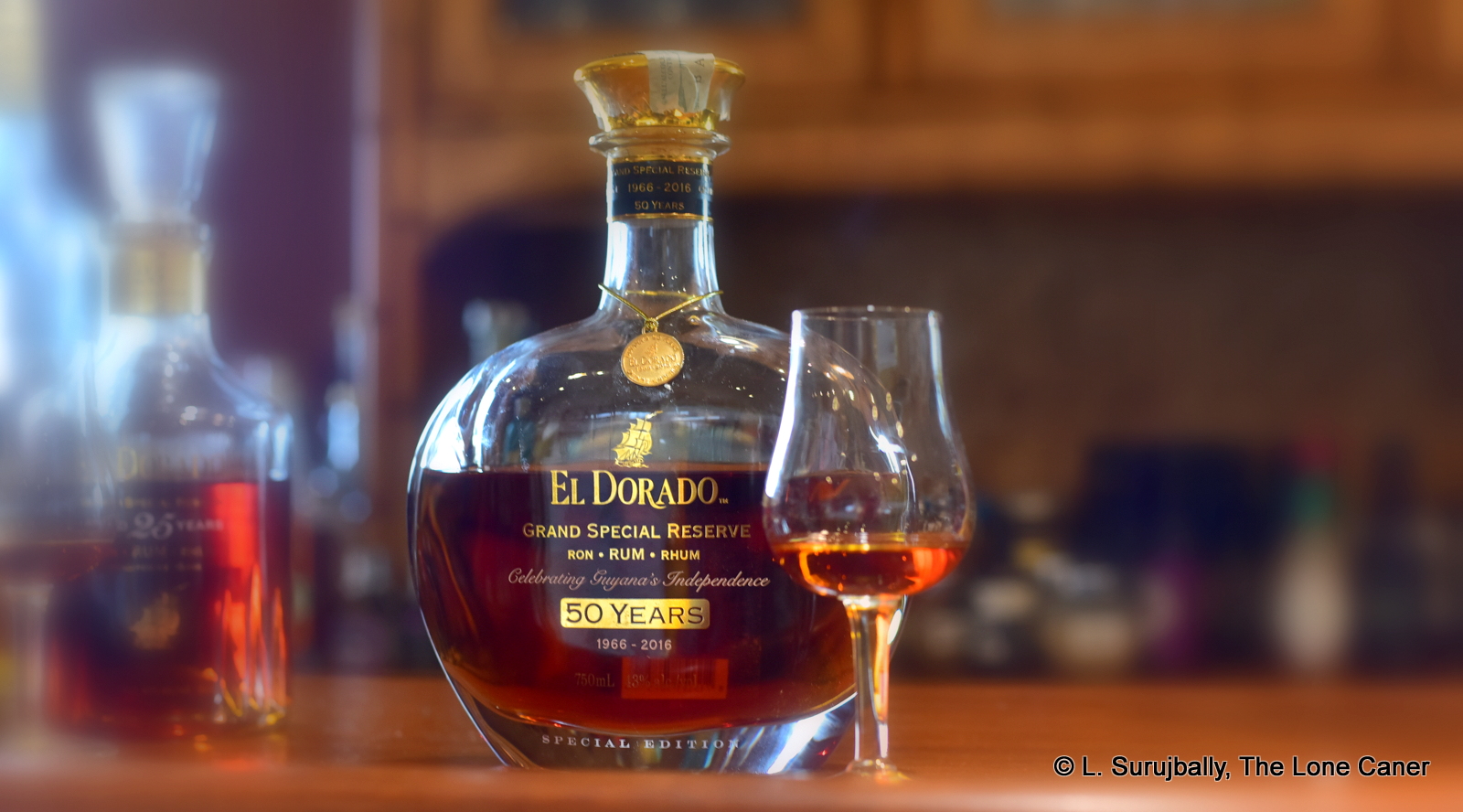
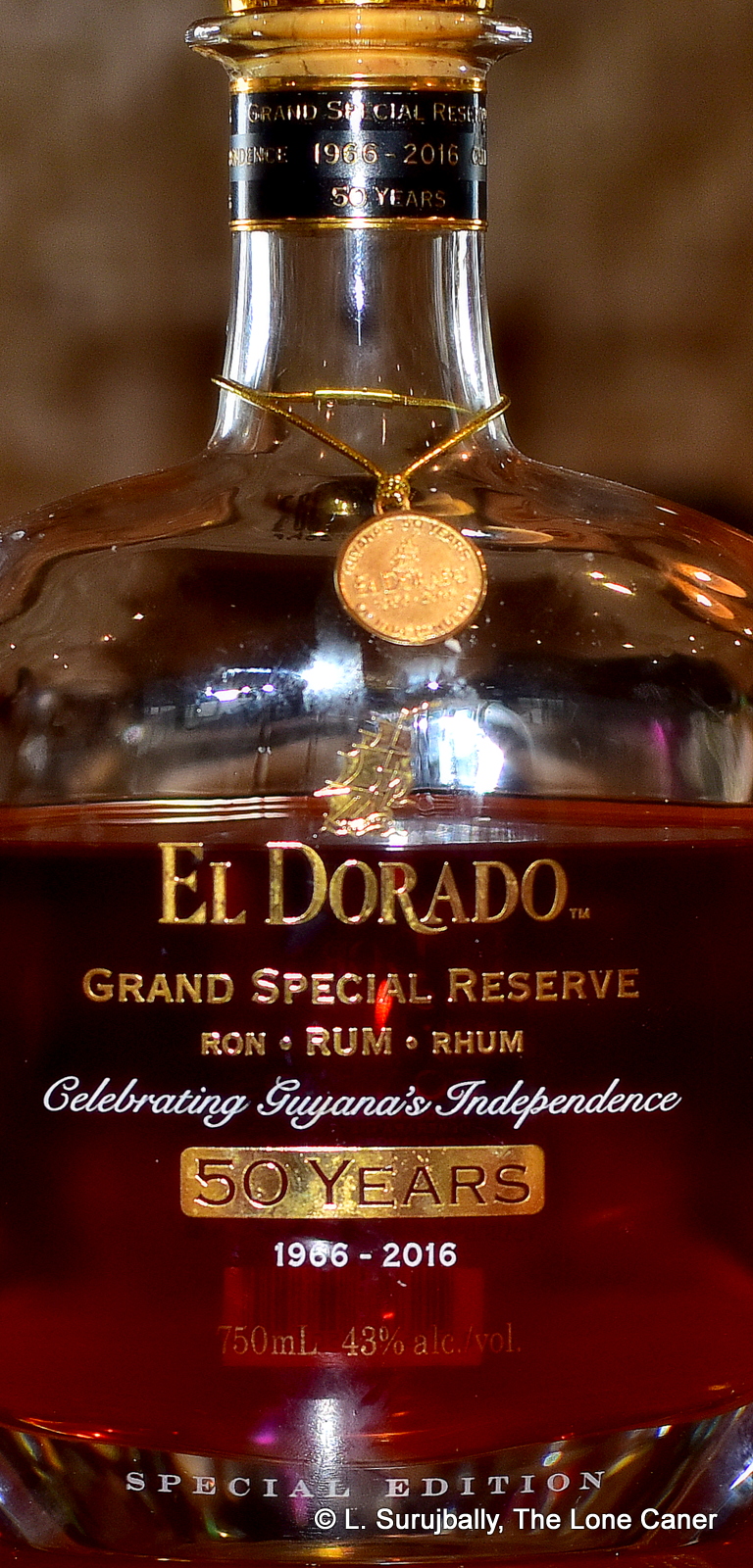 Which brings us to the El Dorado 50th Anniversary offering, with 600 produced bottles selling for a muscular US$3500 or so (each), and bottled at a less beefy 43%, meant to celebrate Guyana’s 50th anniversary of independence in 2016, just as the Appleton 50 did a few years earlier. It is not, as some websites state, a fifty year old rum (the bottle itself notes “50 years” in bold writing which doesn’t help) — by strict definition it is a 33 year old. The Whisky Exchange, which I have no reason to doubt, notes it as being a blend of rums: 65% from 1966, 25% between 1966 and 1976 and another 10% from 1983….so the idea that each of these aged components is from a specific still is likely to be a reasonable assumption (I’ve cobbled together various sources on the parts of the blend in “other notes” below).
Which brings us to the El Dorado 50th Anniversary offering, with 600 produced bottles selling for a muscular US$3500 or so (each), and bottled at a less beefy 43%, meant to celebrate Guyana’s 50th anniversary of independence in 2016, just as the Appleton 50 did a few years earlier. It is not, as some websites state, a fifty year old rum (the bottle itself notes “50 years” in bold writing which doesn’t help) — by strict definition it is a 33 year old. The Whisky Exchange, which I have no reason to doubt, notes it as being a blend of rums: 65% from 1966, 25% between 1966 and 1976 and another 10% from 1983….so the idea that each of these aged components is from a specific still is likely to be a reasonable assumption (I’ve cobbled together various sources on the parts of the blend in “other notes” below).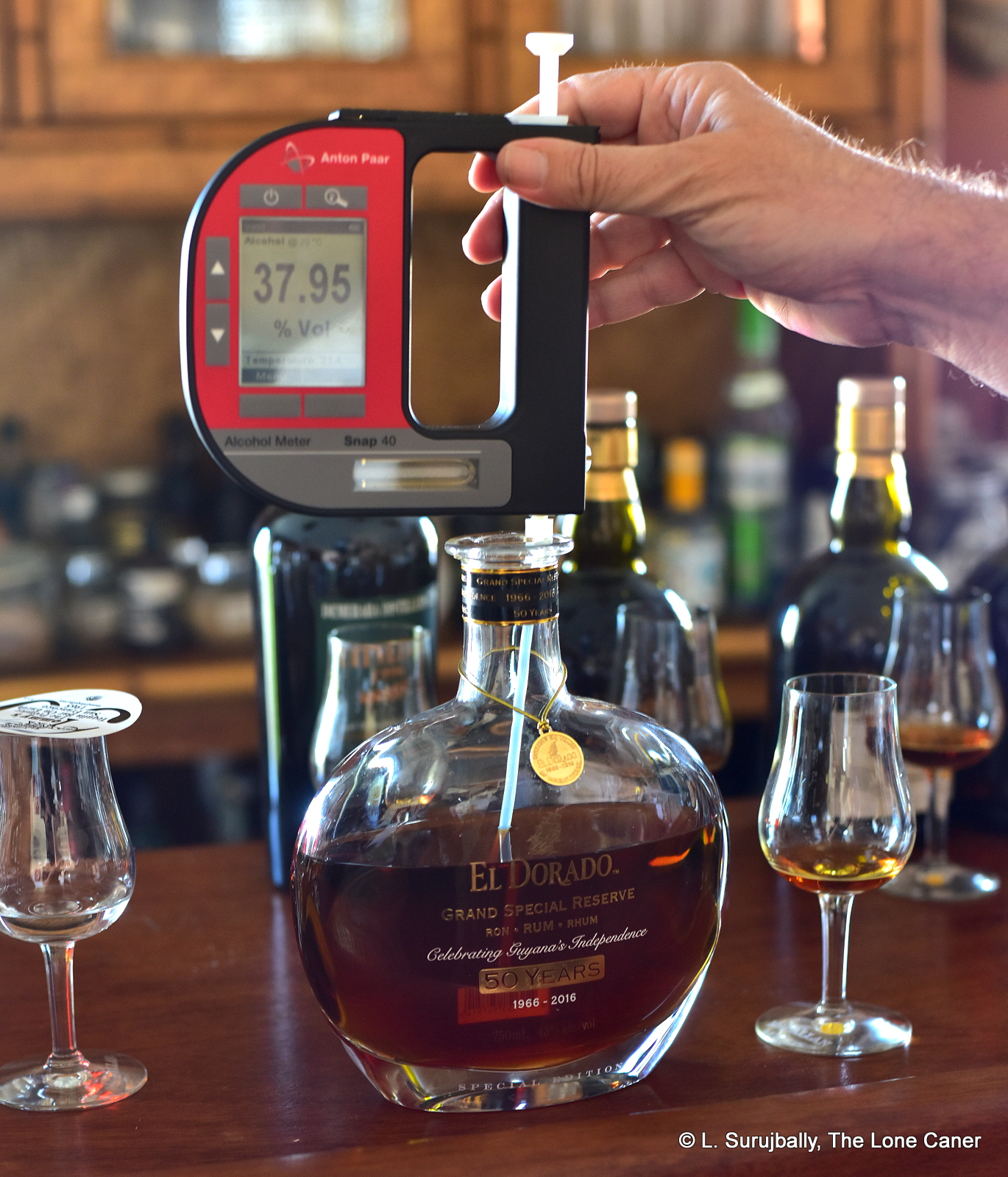
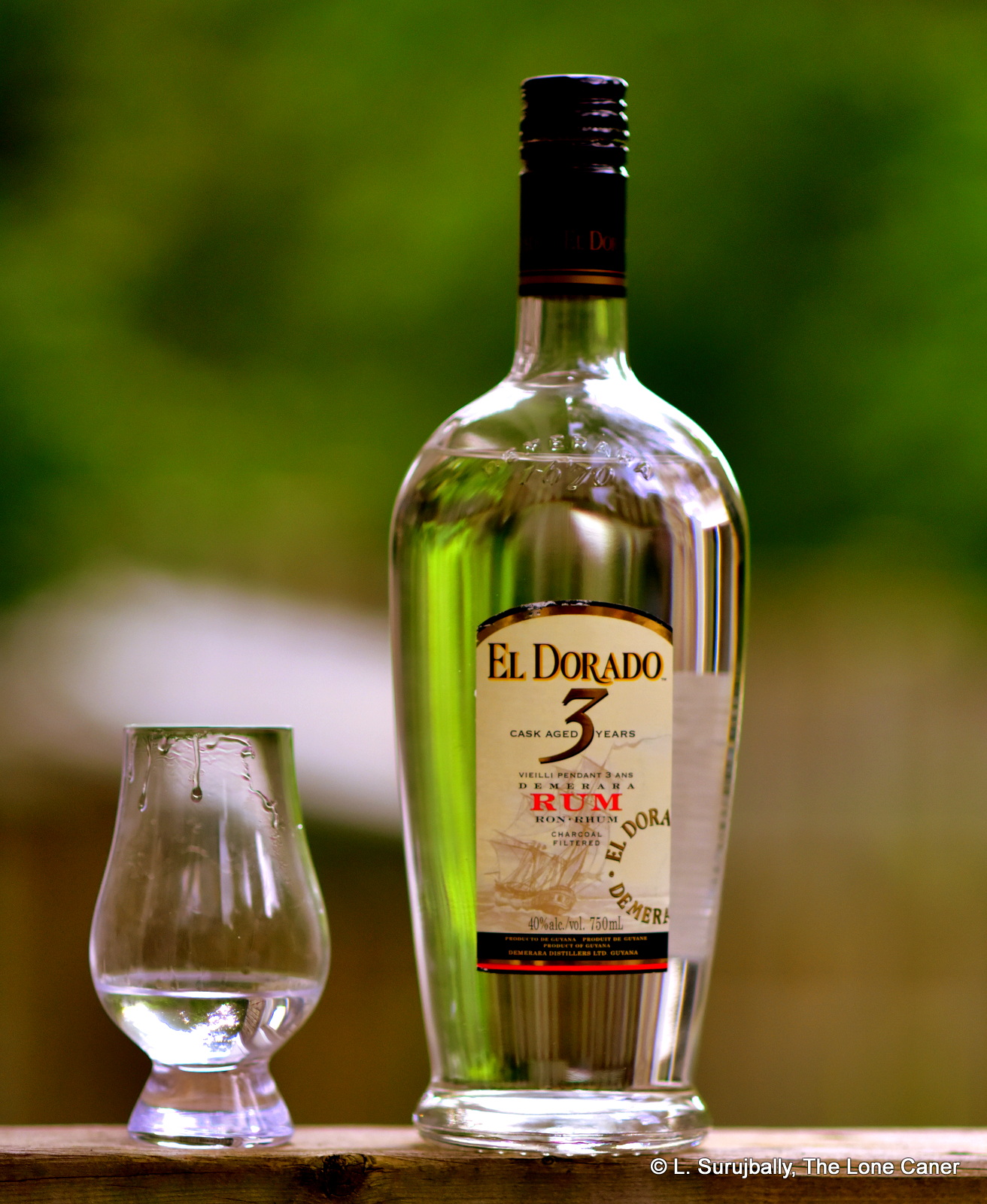
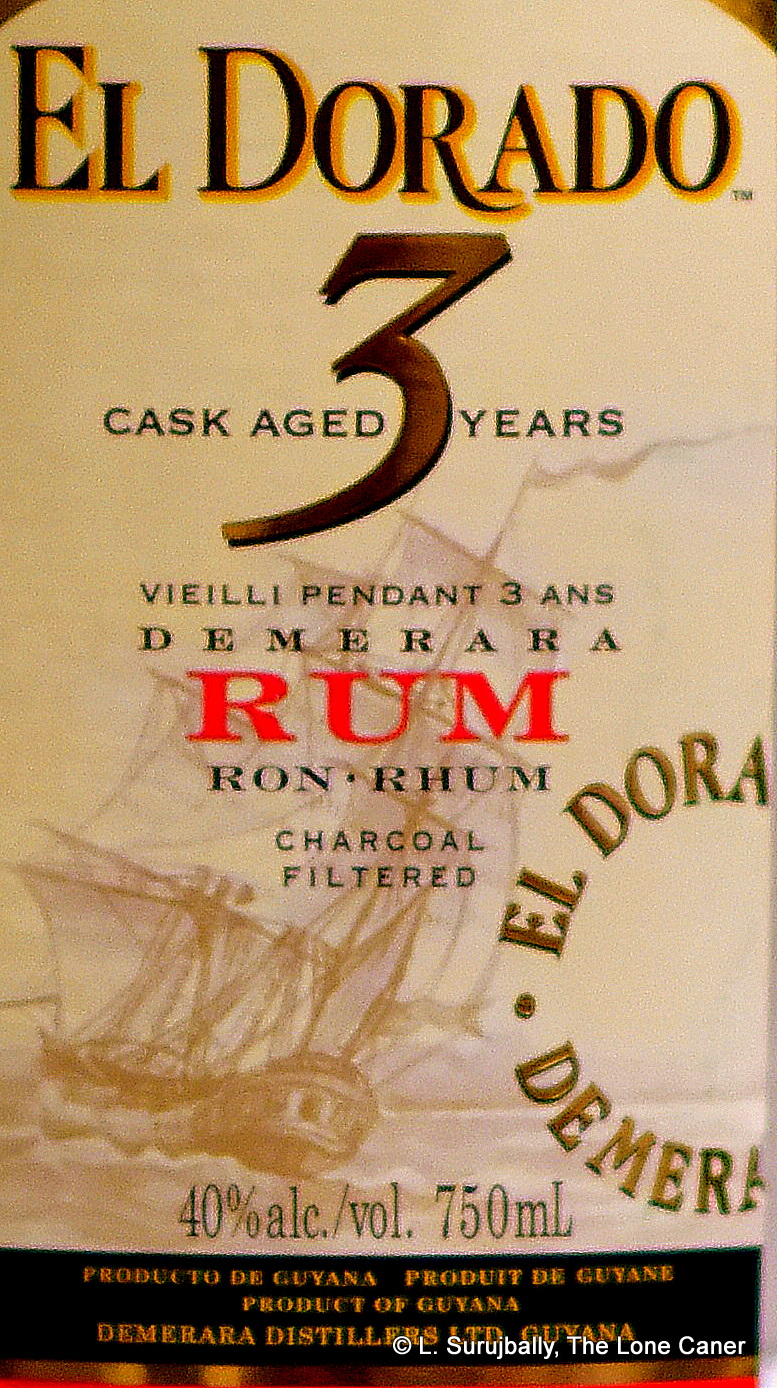 Yeah, 40%. I nearly put the thing back on the shelf just because of that. Just going by comments on FB, there is something of a niche market for well made 45-50% whites which DDL could be colonizing, but it seems that the standard strength rums are their preferred Old Dependables and so they probably don’t want to rock the boat by going higher (yet). I can only shrug, and move on…and it’s a good thing I didn’t ignore the rum, because it presented remarkably well, punching above its weight and dispelling many of my own initial doubts.
Yeah, 40%. I nearly put the thing back on the shelf just because of that. Just going by comments on FB, there is something of a niche market for well made 45-50% whites which DDL could be colonizing, but it seems that the standard strength rums are their preferred Old Dependables and so they probably don’t want to rock the boat by going higher (yet). I can only shrug, and move on…and it’s a good thing I didn’t ignore the rum, because it presented remarkably well, punching above its weight and dispelling many of my own initial doubts.